








Gas stoves could face new emissions standards or even be banned because of their link to indoor air pollutants and childhood asthma, according to the U.S. Consumer Product Safety Commission (CPSC).
The federal agency will open public comment on gas cooking stoves and their hazards sometime this winter, Bloomberg News reported.

“This is a hidden hazard,” agency commissioner Richard Trumka Jr.,

said in an interview. “Any option is on the table. Products that can't be made safe can be banned.”
About 12% of childhood asthma cases can be linked to gas stove use, according to a recent study in the International Journal of Environmental Research and Public Health.
bon-free buildings program at RMI, a nonprofit clean energy group. “By having a gas connection, we are polluting the insides of our homes.”
About 40% of Americans have natural gas stoves in their homes.
The stoves emit nitrogen dioxide, carbon monoxide and fine particulate matter at levels deemed unsafe by the U.S. Environmental Protection Agency (EPA) and the World Health Organization (WHO), according to Bloomberg News.
In October, Consumer Reports urged readers to buy electric after tests on gas ranges found high levels of nitrogen oxide gases.
The issue is one likely to generate back and forth as interest groups weigh in on the issue.




Lawmakers have asked for requiring warning labels, range hoods and performance standards. U.S. Sen. Cory Booker of New Jersey and U.S. Rep. Don Beyer of Virginia, both Democrats, were among those who wrote to the CPSC last month urging action and calling the emissions a “cumulative burden” on Black, Hispanic and low-income households, according to Bloomberg News.
Some Republicans have called the plans government overreach.
“If the CPSC really wanted to do something about public health, it would ban cigarettes, or automobiles, long before it moved on to address stoves,” said Mike McKenna, a GOP energy lobbyist. “It's transparently political.”

this discussion should be, rather than banning one particular type of technology,” said Jill Notini, a vice president with the Washington, D.C.based trade group. “Banning one type of a cooking appliance is not going to address the concerns about overall indoor air quality. We may need some behavior change, we may need [people] to turn on their hoods when cooking.”
Policymakers in nearly 100 cities and counties have adopted policies that require or encourage a move away from fossil fuel-powered buildings in an effort to address climate change, Bloomberg News reported.
Natural gas distributors have said that bans on this fuel would offer little environmental benefit but would increase costs.
“The U.S. Consumer Product Safety Commission and EPA do not present gas ranges as a significant contributor to adverse air quality or health hazard in their technical or public information literature, guidance, or requirements,” said Karen Harbert, president of the American Gas Association.
The Inflation Reduction Act may provide some relief to consumers who can get rebates of up to $840 to purchase new electric ranges, part of $4.5 billion to help low- and moderate-income households electrify their homes, Bloomberg News reported.
The commission could issue a proposal as soon as this year, Trumka said.
“There is about 50 years of health studies showing that gas stoves are bad for our health, and the strongest evidence is on children and children's asthma,” said study co-author Brady Seals, a manager in the car-
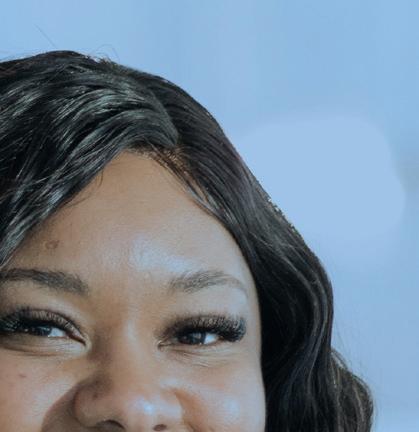
The Association of Home Appliance Manufacturers, which represents gas range manufacturers, said all cooking produces emissions, not just gas.
ECMC-35641_RecruitementAd_InGoodHealth_9.75x6.69_M


“There is this misconception that if you want to do fine-dining kind of cooking it has to be done on gas,” Trumka said. “It's a carefully manicured myth.”
“Ventilation is really where

Trim Size: 9.75”W x 6.69”H | No Bleed | CMYK
At ECMC, each of us—from doctors, nurses, support sta , and specialists—is focused on not just healing the community but supporting each other at every turn. Our commitment to our employees starts with a rewarding work environment and continues through to our professional development programs. Whether you’re just starting out or you’re a seasoned healthcare professional, ECMC is the perfect t to further your career.
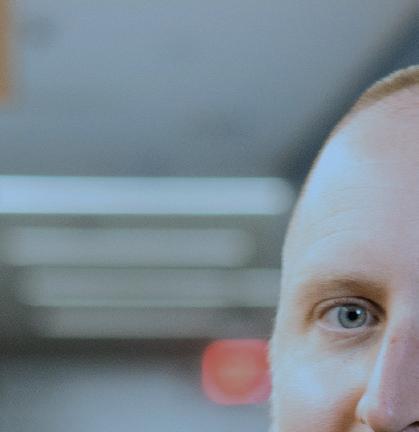
the ECMC family of caregivers

“Patients want to make sure that they are getting the best treatment that they can get anywhere. At Roswell Park, we are at the forefront of new cancer therapies. They know, with full confidence, they are getting the best cancer care available.”
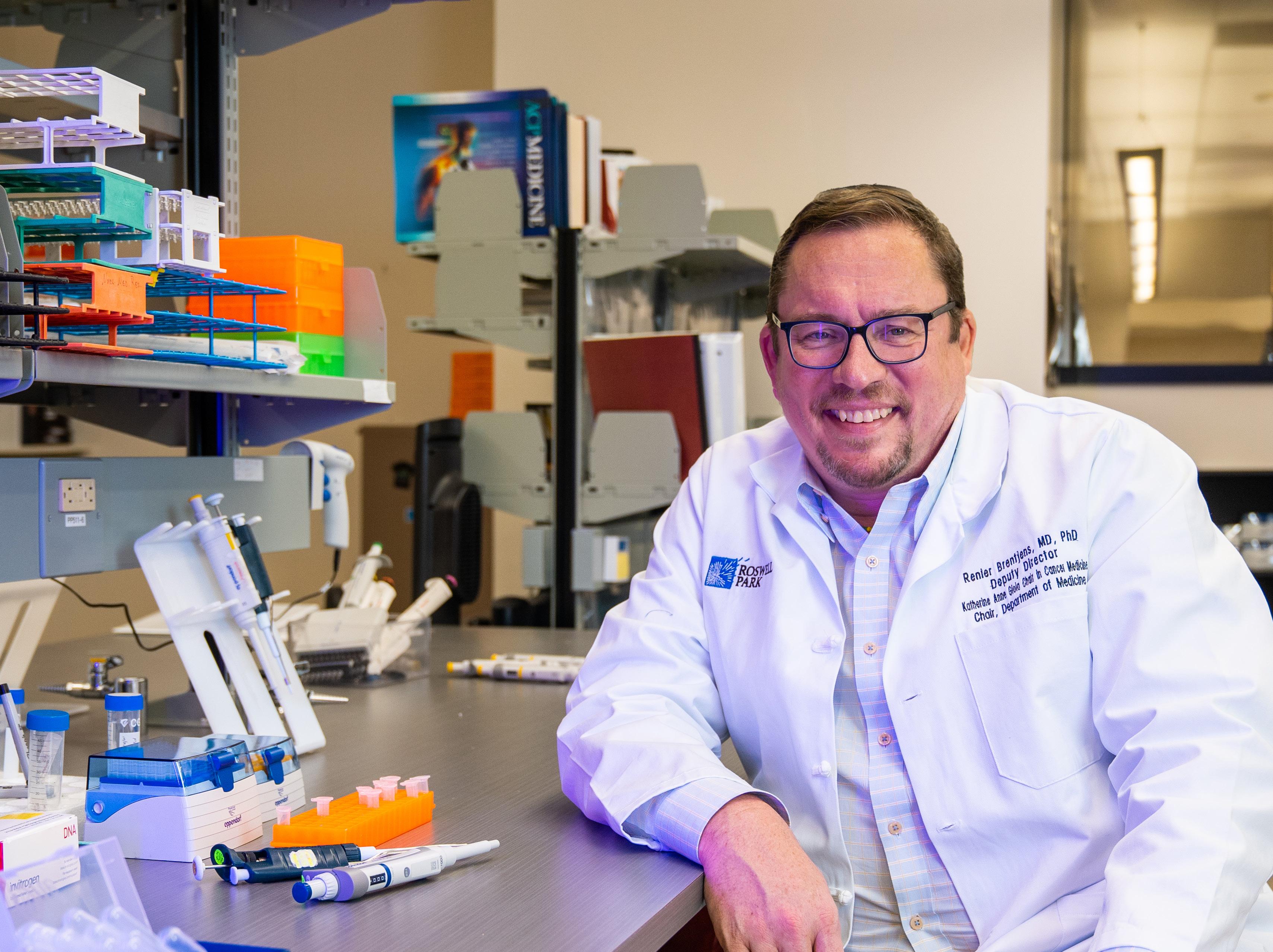 – Renier Brentjens, MD, PhD Deputy Director
– Renier Brentjens, MD, PhD Deputy Director
Please visit JustOneDayWithUs.org or call 1-800-ROSWELL (767-9355) Kim Sweeney and her team are here to assist.
Adults with asthma now have a new rescue medication to turn to after the U.S. Food and Drug Administration approved Airsupra in January.
The drug is the first approved to combine albuterol (a beta-2 adrenergic agonist) and budesonide (a corticosteroid).
It's meant for the as-needed treatment or prevention of bronchoconstriction (narrowed airways) and to reduce the risk of asthma attacks in patients with asthma aged 18 and older.
This medication is also the first approved in the United States to contain an inhaled corticosteroid approved as a reliever rather than as a controller of asthma symptoms.
Asthma affects 24 million Americans, with symptoms that vary by person and can change over time. A long-term condition, it causes the airways to become inflamed and narrow. Someone having an asthma attack might cough, wheeze, feel chest tightness and be short of breath.
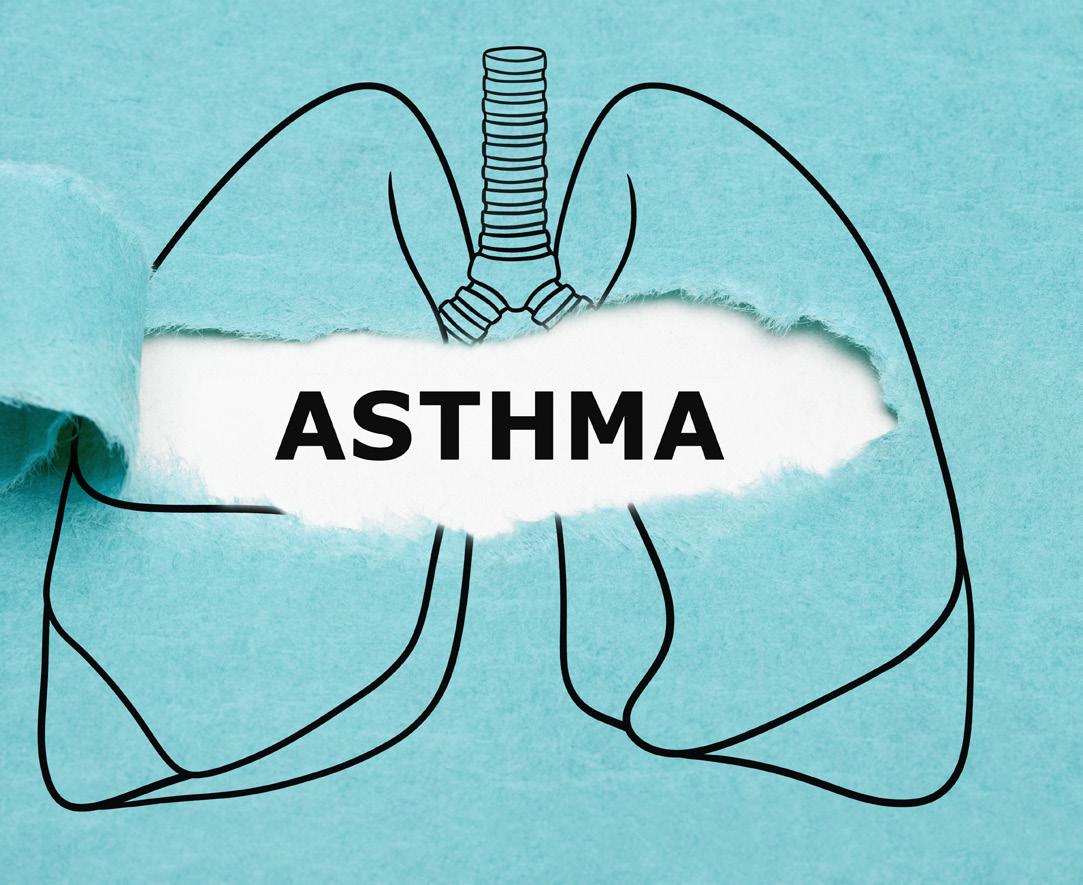
Prior to the approval, the FDA evaluated the drug's effectiveness in reducing severe asthma attacks in a randomized, double-blind, controlled study with patients who had moderate to severe asthma.
The patients in the study were randomly assigned to use either Airsupra or just albuterol on its own. Patients received treatment for at least 24 weeks.
The researchers looked at the time a patient had to the first severe asthma attack that required systemic corticosteroids for at least three days or an emergency room visit that led to taking the steroids or hospitalization for at least 24 hours. Adult patients treated with Airsupra had a 28% reduction in the risk of a severe asthma attack compared to those using just the albuterol. Airsupra is taken through two oral inhalations.
Most common side effects for those taking Airsupra were headache, an oral yeast infection, cough and difficulty speaking.
Q: What areas of the heart do you specialize in as a cardiologist?
A: I’m a clinical, non-invasive cardiologist, so I don’t do angiograms. My area of specialty is adult congenital heart disease and I also read [echocardiograms] and do ultrasounds of the heart that are done through the throat under anesthesia. I’m mostly office-based, but I’m in the hospital once a week at Millard Fillmore Suburban and helping the team with imaging and stress testing.
Q: When we’re talking about adult congenital issues, we’re talking about structural defects?
A: Inborn, yeah, so congenital structural defects children have usually had surgery for and are transitioning out of the pediatric world to adult cardiology. So I work really closely with our pediatric cardiologists.
Q: How common are these types of congenital defects?
A: It depends what defect we’re talking about. It’s still very rare to have congenital heart defects. But you have to look at the particular patient population with regard to what the risk is for having complications. So the patients with really high-level defects that have had surgery as a child, depending on when they had surgery as well, can put them at risk of heart arrythmias and, in extreme cases, sudden death. But having said that, the population is still very small compared to the general population, so it’s a small group of patients, but it’s just really import ant that they see someone with a background in congenital heart conditions so it can correct ly identify the potential problems they may develop. So it can be anything from a simple hole in the heart that gets closed during child hood that we’re follow ing up
on in adulthood or it could be a child that’s born blue and has a complex heart surgery as a child that then manifests later in their life as arrythmias. Those may require a pacemaker, defibrillator or open heart surgery.
Q: How treatable do these conditions tend to be?
A: When you look back at the beginning when they came out with bypass surgery, which really isn’t all that long ago when you think about it, we had very few options for these kids. So we developed techniques to try to limit the amount of cyanosis or blue blood they are exposed to, and circulate more oxygenated blood supply. The pioneers of pediatric cardiac surgeons developed more sophisticated shunts. It’s become advanced enough that these kids are able to grow up with a fairly normal childhood and have the potential to have a pretty normal adulthood, too, depending on the type of lesion they were born with. There are some congenital anomalies that may require a heart transplant at some point in their lifetime, but for the vast majority of people with heart defects, they can go on and have a pretty normal longevity as long as they continue to follow up with somebody watch out for any kinds of bumps along the road, so to speak.
Q: Do you see heart issues in younger adults getting more exposure? We recently had a high-profile case in Damar

A: It’s pretty recent, so it’s hard to know how or if that’s going to translate into more people being assessed. But in general, since COVID, we’ve had a lot more young people come in to get checked out when they’ve had any kind of cardiac symptoms. The sports world is a bit different being a highly competitive environment. I do think a lot of younger people are advocating for getting evaluated if they notice any irregular symptoms.
Q: There’s been more focus on heart inflammation in the context of both the COVID virus and the COVID vaccines. What have you seen in your practice?
A: So I can only speak for my patient population, but I’ve had patients with some complications due to COVID early on, with myocarditis and pericarditis. That’s from the virus itself. Hopefully as time goes on, we’ll see fewer complications. I’ve very rarely seen complications from vaccination, although I have reported some to VAERS to let them know of some myocarditis and pericarditis complications within a week of vaccination. These were young men.
Q: When it comes to recovery in both cases, how able to recover do people seem to be?
A: Speaking generally, before COVID, when we saw myocarditis from general viruses like colds or flu, it could sometimes take a couple months for heart function to return to normal. With covid, it seems like most of the people who have had myocarditis complications have been patients with preexisting conditions cardiac-wise. I haven’t had too many people who have gotten myocarditis from covid who haven’t had any prior cardiac history. There have been a couple, but not many. Most were chronic heart failure patients who got worse after covid. So it’s taken some time for them to improve. But, with the medications we have, we’ve seen a lot of them get better. From the vaccinations, most of the data shows the injury to the heart with regard to myocarditis is very small, and that’s been true of the ones I’ve followed personally. It normalizes pretty quickly, and that probably has a lot to do with their age. Most of these patients are younger than 30.
Q: What kinds of developments in cardiology are you looking forward to? What’s on your radar?
A: I’m looking forward to less and less invasive procedures for structural heart care. We’ve seen great results with TAVRs (trancatheter aortic valve replacement) and as a result we’re sending fewer patients to open heart surgery. So having more conservative treatment options is very exciting. I’m also looking forward to more advances in the congenital heart realm, which is constantly evolving. And a lot of the knowledge that’s advancing in cardiology in general translates over into developing treatments for congenital heart defects.
Name: Laura Ford-Mukkamala, DO

Position: Cardiologist with Great Lakes Cardiovascular
Hometown: Buffalo
Education: Doctor of Osteopathic Medicine, New York College of Osteopathic Medicine; residency, internal medicine, University of Connecticut; cardiovascular fellowship, University of Connecticut
Affiliations: Kaleida Health System
Organizations: American College of Cardiology; American Society of Nuclear Cardiology; American Society of Echocardiography
Family: Husband, one daughter
Hobbies: Hiking, photography, reading, travel
Cardiologist with Great Lakes Cardiovascular discusses adult congenital heart diseases and explains why non-invasive procedures allow doctors to send fewer patients to open heart surgery
Continuing a decades-long trend, the percentage of American women who've ever had a child declined again in the latest figures from the U.S. Centers for Disease Control and Prevention.
"A lower percentage of women aged 15 to 44 in 2015–2019 had ever had a biological child (52.1%) compared with women aged 15 to 44 in 2011–2015 (54.9%)," concluded a report issued Jan. 10 by the CDC's National Center for Health Statistics (NCHS).

Declines were also seen for men becoming fathers. From 2015 through 2019, 39.7% of boys and men aged 15 to 44 had fathered a child, compared to 43.8% during 2011–2015, the report said.
Overall, birth rates have plummeted for Americans over the past five decades: "Between 1976 and 2018, the mean number of children ever born per woman declined, from three children to two," according to the report's authors, Gladys Martinez and Kimberly Daniels.
By 2019, the average female aged 15 to 49 had given birth to 1.3 children, and the average male had fathered 0.9 kids.
American women are also tending to have a first child later in their lives, the new study found.
The average age for giving birth to a first child was about 24 years for women and 27 for men in 2019, according to the report, which was based on a national survey of almost 21,500 Americans aged 15 to 49. The probability that a woman would have her first child by age 40 fell from 83% in 2011–2015 to 81% by 2019. A similar dip was seen for men becoming fathers by age 40: from
78% in 2011–2015 to 72% by 2019.


In fact, "delayed childbearing, having a first child at age 35 or over, [has] increased ninefold between 1972 and 2012," the authors noted. Overall, birth rates among women in their 40s have charted steady increases since 1985.
According to the report, the reasons for these trends are many: Better access to contraception, more women seeking higher education, more women entering and staying in the workforce, changing family values, relationship instability, and concerns over personal finances and the high cost of childrearing.
"Having a first child at older ages has been associated with a positive impact on women's wages and career paths," according to Martinez and Daniels.
Later childbirth can be healthy for children, as well, they noted, because having a child in your 30s and 40s typically means a family has better financial resources.


A woman's education appears to influence the timing of her having a first child. The report found that as the years a woman spent in school rose, her likelihood of having a first child in her teens or 20s declined.
Of course, fertility declines with advancing age, so the trend towards later births does have that "potential negative consequence," the authors added.
There's also been a continued trend toward Americans having children outside of marriage, the report found.
The National Health Statistics Report was published Jan. 10 as an NCHS Data Brief.




Cancer deaths continue to decline, dropping 33% since 1991 and saving an estimated 3.8 million lives, according to the American Cancer Society's annual statistics report.
But individual trends within that overall success story highlight the struggle to find the best ways to prevent, detect and treat cancer for all Americans, the society said.
On the positive side, the United States saw an “astounding” 65% reduction in cervical cancer rates
among 20- to 24-year-old women between 2012 and 2019, a direct result of human papillomavirus (HPV) vaccination, said physician William Dahut, chief scientific officer at the American Cancer Society (ACS).
“The effort that our children went through over the last 20 years or so to go through vaccinations have actually saved lives,” Dahut said, noting that the plummeting case level “totally follows the time when HPV vaccines were produced.”
Chief executive officer Karen
Knudsen added that “this is some of the first real-world evidence that HPV vaccination is likely to be effective in reducing cancer incidence and [death rates].”
Unfortunately, rates of advanced prostate cancers are on the rise, likely driven by confusion and conflict over screening guidelines, ACS officials said.
The second-leading cause of cancer death for U.S. men, prostate cancer cases rose 3% a year from 2014 through 2019 after two decades of decline, the report found.
There's also been a 5% year-overyear increase in diagnosis of men with advanced prostate cancer, “so we are not catching these cancers early, when we have an opportunity to cure men,” Knudsen said.
Black men, in particular, are being affected by the rise in prostate
cancer, according to the report.
“Black men, unfortunately, have a 70% increase in incidence of prostate cancer compared to white men and a two- to four-fold increase in prostate cancer [death rates] as related to any other ethnic group in the United States,” Knudsen said.
The nation's leading authority on health screening, the U.S. Preventive Services Task Force, recommends that men between 55 and 69 years of age discuss the potential benefits and harms of prostate cancer screening with their doctor and then decide for themselves.
American Cancer Society guidelines recommend that doctors discuss screening with men at an earlier age — 40 for those with a close relative who has had prostate cancer, 45 for men at high risk, and 50 for nearly all others.
According to a study sponsored by the Journal of the AMA, ransomware attacks on healthcare organizations have doubled over the last five years.
Last year, 374 reported attacks impacted the personal health information (PHI) of about 42 million people. The attacks are increasing in both frequency and sophistication. Worse yet, researchers believe these attacks are under reported. The top targets are health clinics, followed by hospitals, ambulatory surgery centers, mental health providers, dental practices and post-acute care providers like nursing homes. Larger, highly networked providers are most vulnerable because employees can access information remotely via cell
A survey recently conducted by American Well (AmWell) revealed 62% of respondents prefer virtual visits, even though it is relatively safe to return to in-person visits. Virtual provider Doctor On Demand reports a 50% increase in business since the fall. The pandemic has exacerbated ongoing economic, environmental and social issues. Notable increases in virtual visits were among men, seniors, millennials and Gen Z. A national BCBS study revealed millennials, versus baby boomers, are more likely to associate the impact of mental health upon physical health. They are twice as likely to develop Type 2 diabetes and almost three times more likely to have coronary heart disease. 92% of millennials feel the pandemic has negatively impacted their mental health. Consequently, alcohol use, smoking and vaping are increasing among that generation. As the millennial and Gen Z generations become more dominant in the overall US population, industry experts predict much more emphasis will be placed on long-neglected behavioral health care.
phones or personal computers, making it easier for hackers.
The healthcare industry was notoriously slow to adopt electronic medical records. Ironically, this made ransomware attacks possible. Healthcare organizations are required to report any breaches to their patients. CommonSpirit Health, the nation’s second largest nonprofit hospital system, faces a class action lawsuit for “failing to exercise reasonable care” to protect PHI. 600,000 records were hacked. Scripps Health will pay out $3.5 million to 1.2 million patients impacted by a breach in 2021. Each plaintiff will receive a minimum $100 with some receiving $7,500 for extraordinary suffering and out-ofpocket expenses.
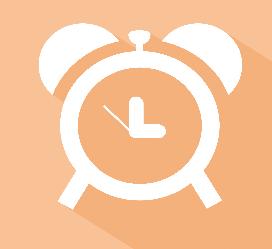
Mifepristone or RU-486 is now available at local pharmacies, retail pharmacies like CVS and Walgreens and via mail order. The drug can be used up to 10 weeks gestation. To protect a patient’s privacy, the DOJ ruled the pill can be delivered via mail. No one must appear in person at a pharmacy to receive the drug. The FDA requires instructions on how to use the pill; information regarding the risks; shipping services must provide tracking; it must be dispensed and delivered in a timely fashion. Pharmacists are one of the most trusted providers, yet they are grossly underutilized. Most people would like to see them provide more services like testing for flu and strep throat and be a more active partner with primary care providers. By providing additional services, pharmacists can relieve a lot of the pressure on physician practices and community clinics.
As of December 15, 2022, enrollment is up 18% on the exchanges
from the same time in 2021, or about 1.8 million enrollees. The healthcare exchanges offer individuals without employer sponsored healthcare various commercial insurance plans. Premiums are based upon the individual’s income.
It contains several key healthcare items. Medicare reimbursement for physicians was to be cut 4.5% this year. Instead, the cut was reduced to 2% in 2023, but then another 3.5% cut in 2024. This cut comes at a time when practices are plagued with nursing shortages and inflation still around 7%-8%. $9.2 billion is earmarked for the CDC which is a $760 million increase from last year. Half of the increase is for future pandemic preparedness. Telehealth flexibility, which was to expire this spring, has been extended another two years. This includes paying providers the same for a virtual visit as an office visit. Medicare will cover marriage and family therapists and counselors and spend more on mobile mental health crisis providers. The spending package also continues enhanced payments to rural hospitals with high Medicare occupancy for two more years.
Per executive order, our 7,000 hospitals (for profit and nonprofit alike) must indicate who owns them and what the nature of that ownership entails. The information will be available on the CDC website. Skeptics wonder what is the point? There are no “secret” hospital owners. All of this is readily available on IRS form 990. In any event, it is another way for Medicare to make healthcare more transparent to the consumer. Skilled nursing facilities have been required to do this for years.
As of this writing, more than 7,000 nurses from Mount Sinai and Montefiore hospitals are on strike for better wages and safer staffing levels. The nursing situation in these
two hospitals is not much different than the nursing situation in most of our 7,000-plus hospitals across the country. The pandemic has wreaked havoc on the nation’s physical and mental health. More than a million people have died. The lingering impact of virus variants continues to swamp emergency rooms which end up treating admitted patients in hallways because inpatient beds upstairs are at capacity. Because of the nursing shortage, hospitals have had to close beds that cannot be safely staffed. So, capacity has been severely hampered. Hospital-based nurses and physicians are literally the front line in a “war” that has lasted three long years. The constant stress has caused a lot of these providers to either quit or retire early, leaving fewer of their colleagues behind to treat the higher patient load. And there seems to be little relief in sight. But increasing wages and adding staff requires, well, money. And cash-strapped hospitals just don’t have it. Hospital reserves are notoriously low. Unlike just about any other business, hospitals (and physicians) cannot solve the money problem by simply raising prices. Virtually no one would end up paying their new price because government and commercial payers set their reimbursement in advance. Based on federal and state budgets, there won’t be enough financial relief this year from either Medicare or Medicaid. And there won’t be much relief coming from commercial insurers because they tend to mimic what Medicare pays. Frustrated and exhausted nurses are on strike against their cash-strapped employers. But hospital administration is not the enemy. At some point, the AHA, ANA and AMA need to band together and “strike” against the payers.
pitals and healthcare organizations. He operates GW Chapman Consulting based in Syracuse. Email him at gwc@gwchapmanconsulting.com.


It was horror on the field. But a ripple effect of Buffalo Bills’ Damar Hamlin’s cardiac arrest and emergency resuscitation is a dramatic increase in people signing up for CPR classes at area centers that provide American Heart Association training.
“Our phone has been ringing off the hook. We’re getting call after call,” said Michael Derme, program director for Buffalo CPR Inc. “I’m glad that more people want to learn these skills.”
Now, as Hamlin continues his recovery following the Jan. 2 incident in Cincinnati, there’s hope that education and training will lead to more lives being saved in acute situations where every second counts.

The need is clear: The AHA estimates that nearly 300,000 people die annually from sudden cardiac arrest. But the chance of survival can double or triple with immediate CPR.


“Seventy percent of the deaths occur outside a medical facility. So seven out of 10 people die at home or in a restaurant or shopping center, for example,” Derme said. “One of the keys is how quickly you start CPR. If you start right away, they have an excellent chance of being resuscitated. It is Step 1 – let’s keep them alive and then we’ll try to find out what caused
the heart to stop beating.
Emergency resuscitation via CPR and defibrillation is an important topic for people of all ages, said Roger Leising, managing member of WNY Healthcare Education & Equipment.



“It is horrific to be in a traumatic situation and not know what to do,” he said. “The most therapeutic thing is to learn CPR so you can respond. There is nothing more important than knowing how to do CPR when you’re in that situation and you can’t get there without being trained.”

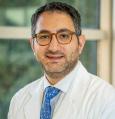
Local centers teach critical first aid skills through hands-on, instructor-led courses for healthcare professionals and lay rescuers. They field inquiries not only from individuals but from organizations such as businesses and schools.



“The more trained people, the more lives saved. We cannot depend on our front-line heroes alone. We have to help them out as lay rescuers,” Leising said. “The Damar Hamlin event was an eye-opener. It showed us the importance of CPR and defibrillation with an AED (auto mated external defibrillator).”
His students range in age from



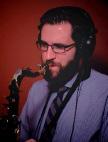






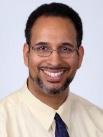


children to adults, many of whom learn what is called compression-only CPR for bystanders.

“We had a family with two young kids come in to learn CPR, and the 9-year-old boy said, ‘I’m with grandma and grandpa all summer long. I want to be able to save Grandma’s life someday.’ Then the family went above and beyond and bought an AED for their household,” Leising said.





“This is real life,” said Richard Shok, owner/director of Code One Training Solutions LLC. “Your actions in a chaotic moment could make a difference.”
“Cardiac arrest does not look as it appears in movies and television,” Shok added. “Those experiencing it can have involuntary movements, gasping breaths and even seizures. It’s important to look past that and remember: No responsiveness, no normal breathing, start CPR. This is the ‘No, No, Go’ approach that 911 dispatchers use when coaching someone to do CPR.”
Another positive that resulted from Hamlin’s emergency is evaluation of AED protocols.

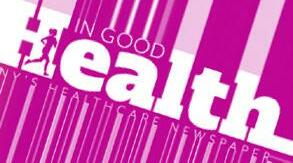

“We have seen a tremendous increase in requests for AED pads and batteries, which likely means that these devices were neglected and potentially unusable before this reminder,” Shok said.
A final word comes from Robert Kasper, owner/president of CPR –The Pulse Center.
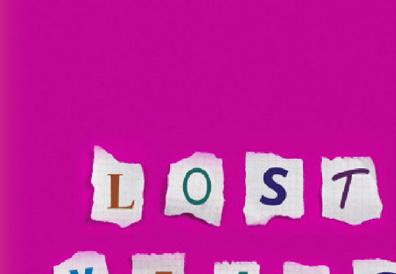


“As an EMS healthcare provider and a CPR/first aid instructor, I have worked many cardiac arrests and I am convinced that if the public took a couple hours every two years to learn the skills of CPR, we would have more successful outcomes for patients,” he said. “To learn the basic skills of CPR is easy; to prepare for a cardiac emergency is another thing altogether.”
Instruction covers how to recognize a heart attack or stroke and how they are different from a cardiac arrest, according to Kasper. Trainers present various scenarios plus in struction on how to call 911 or what to say to a dispatcher.
“CPR training will give you ease of mind when dealing with a cardiac event,” he said. “Be it yours or some







In the event that someone is unresponsive or collapses, tap them on the shoulder to wake them up and shout, “Are you OK?” If no response, tell someone to call 911 and get an AED. Look for normal breathing (not gasping). If they are not breathing normally, start CPR.

Interlock your fingers and place one hand on top of the other. Lock your elbows and use the heel of your hand to push down on the center of the chest in line with the nipples, two inches deep. Keep pushing to the beat of “Stayin’ Alive” or “Baby Shark.” These songs are about 100 beats per minute and will keep you going at the proper rate. Keep doing chest compressions until help takes over or medical profession-

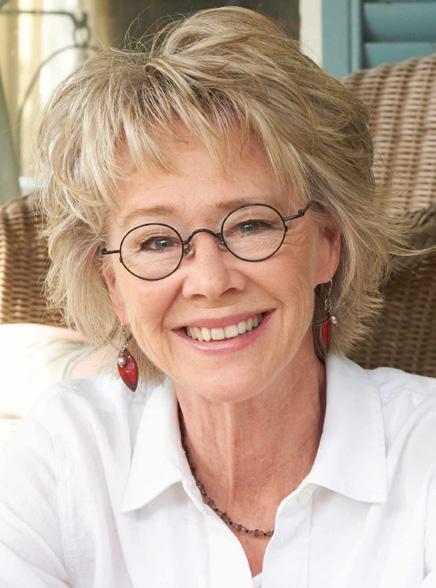
What’s a single person to do on Valentine’s Day?
Embrace it!
February (and that perennial “day of love”) is just around the corner, so why not beat Cupid to the punch?
Grab your proverbial bow and arrow, take aim and decide to warmly embrace Valentine’s Day with grace, confidence and humor.
Since the ball dropped on 2023, we haven’t been able to walk into a store, open a magazine or even shop online without being bombarded by candy hearts, roses, pink teddy bears and cards galore.
Yes, the countdown to Valentine's Day started even before we set down our glass of Veuve Clicquot. In full force, it's no wonder that those without a "special someone" on their arm may dread what Hallmark promises to be the most romantic day of the year.
What's a single person to do? Before drowning your sorrows in a box of Godiva chocolates, consider
these tips for surviving the day dedicated to amour:
Take the broadest possible view of Valentine’s Day and decide it’s not just a day for couples, but a day to celebrate love in all its glorious manifestations: love of self, love of family, love of friends and — one of my favorites — love of pets!
Believe me, you won’t be the first to purchase an adorable, heart-festooned collar for your furry friend. Guilty!
Send cards with thoughtful mes-
Vaccinations among kindergarteners declined for the second year in a row, leaving hundreds of thousands of young children vulnerable to dangerous infectious diseases, U.S. health officials reported in January.
About 93% of kindergarteners had their required vaccinations during the 2021-2022 school year, including the measles-mumps-rubella (MMR), diphtheria-tetanus-pertussis, polio and chickenpox vaccines, according to a new study published Jan. 13 in the Morbidity and Mortality Weekly Report (MMWR), a publication of the U.S. Centers for Disease Control and Prevention.
That's down from 94% nationwide during the 2020-2021 school year and 95% for the 2019-2020 school year, the report found.
“While this might not sound significant, it means nearly 250,000
kindergartners are potentially not protected against measles alone,” physician Georgina Peacock, director of the CDC's Immunization Services Division, said during a media briefing on the findings. “And we know that measles, mumps and rubella vaccination coverage for kindergartners is the lowest it has been in over a decade.”
About 2.6% of kindergarteners had an exemption for one or more required vaccine, compared with 2.2% for the previous school year. Of those 2021-2022 exemptions, 2.3% were for non-medical reasons, the results showed.
The exemption numbers are “encouraging” in that they have remained low despite controversy and misinformation related to vaccines, physician Sean O'Leary, chairman of the American Academy of Pediatrics' Committee on Infectious Diseases,
sages to people you care about, buy one of those cuddly pink teddy bears for your favorite niece, connect with someone with whom you’ve lost touch, or treat your office mates, gym buddies, volunteers pals or bridge partners to some bagels (with cherry cream cheese).
Feeling brave? Surprise someone you’ve secretly admired with an invitation to get together. Maybe for coffee? A walk? A movie?
Why not? It’s just a day. Invite some of your single friends over for wine and pizza or agree to meet anywhere that’s not sporting a Valentine’s Day theme.
Raise a glass and toast to your independence, your freedom and your triumphant escape from the commercialism of this holiday. Valentine’s Day is only depressing if you let it be. Have some fun with it.
One of the best ways to avoid a downward woe-is-me spiral is to think about others in need and how you might brighten their day. Consider baking a little goodie for a neighbor who lives alone, calling your uncle who lost his wife last year or committing one of those random acts of kindness.
You might also spend Valentine’s Day celebrating your relationships with those you care about. Pick up the phone and tell your mother, father, sister, brother, uncle, aunt or
dear friend how much they mean to you. Ask how they are doing and listen with your whole heart. Chances are you’ll make their day!
Or show a little love for those less fortunate.
On Feb. 14, consider making a contribution to a local or national organization that helps people or pets in need. You’ll feel better for having expressed your appreciation in such a meaningful way.
Didn’t get around to making any New Year’s resolutions? Make Feb. 14 your new New Year’s Day and make good on those New Year’s resolutions that have yet to see the light of day: quit smoking or drinking, renew your membership at the gym (better yet, go to the gym), schedule your annual physical, organize your paperwork, and vow to do those things on your list that will improve your outlook, your health, and your future.
Your life, your best life, is in your own hands whether you are with or without a special someone. Make the most of it.
I know this may sound silly. But, I’m serious. After you get up on Tuesday morning, Feb. 14, make your bed, and then place a candy heart on your pillow. It will be waiting for you when you turn in later that evening, reminding you that you are loved by the person who matters most: yourself!
said during the briefing.
While the numbers for kindergarteners are concerning, another MMWR report detailing vaccinations among toddlers born in 2018 and 2019 offered some degree of hope.
That study found that vaccination coverage among 24-month-olds remains strong, “and even increased among children born in 2018 and 2019, compared to those born in 2016 and 2017,” Peacock said.

More than 90% of toddlers had gotten the MMR, polio, hepatitis B and chickenpox vaccines, the study authors reported.
However, the researchers found disparities in vaccine coverage among toddlers based on location, income and insurance coverage, Peacock added.
“The report found that coverage with the combined seven-vaccine series for children living below poverty or in rural areas decreased by 4 to 5 percentage points during the pandemic,” Peacock said. “The report also found the percentage of uninsured children not vaccinated by their second birthday was eight times that of privately insured children.”
Gaps in vaccine coverage lead to “entirely preventable” outbreaks, O'Leary said, such as two measles outbreaks reported in U.S. communities last year and a case of paralytic polio in an unvaccinated person in New York.
“These outbreaks harm children and cause significant disruptions in their opportunities to learn, grow and thrive,” O'Leary added.
Development director of the Parkinson’s Foundation discusses Parkinson disease, its symptoms and diagnosis, hopes to raise $30,000 in Feb. 25 event
By Brenda AlesiiArecord number of American adults are now dying with a dementia diagnosis, new research shows.
Yet, that increase of 36% from two decades ago may have more to do with better record-keeping than an actual rise in dementia cases, the study authors said.
About half of all older adults are diagnosed with dementia before their deaths, according to a study from Michigan Medicine–University of Michigan.
The study used data from 3.5 million people over the age of 67 who died between 2004 and 2017, including bills submitted to the Medicare system in the last two years of their lives.
About 35% of these end-of-life
billing claims mentioned dementia in 2004. By 2017, that statistic was 47%. About 39% of people had at least two medical claims mentioning dementia in 2017, compared to 25% in 2004.
This grew most substantially when Medicare allowed hospitals, hospices and doctors’ offices to list more diagnoses on their requests for payment, according to the study. During this time, the National Plan to Address Alzheimer’s Disease also increased public awareness and quality of care while offering more support for patients and their caregivers.
The research provides a starting point for individuals to talk to their families and health care providers about what type of care they would like to receive if they are diagnosed with Alzheimer’s disease or oth-

The end of this month could be the beginning of a new discovery in the world of Parkinson’s disease research. The “Parkinson’s Revolution” will take place across the country on Feb. 25 —a major fundraiser featuring a spinning event throughout the day.
In Western New York, people of all levels can spin at Revolution Studio, 1716 Main St., in Buffalo. The ride generates funds and awareness for Parkinson’s, a disease that is notoriously difficult to diagnose.
In Good Health recently spoke with Chris Jamele, a Buffalo State University graduate and Kenmore resident, who is development director of the Parkinson’s Foundation New York and New Jersey Chapter. He works out of the Western New York office is in Williamsville.
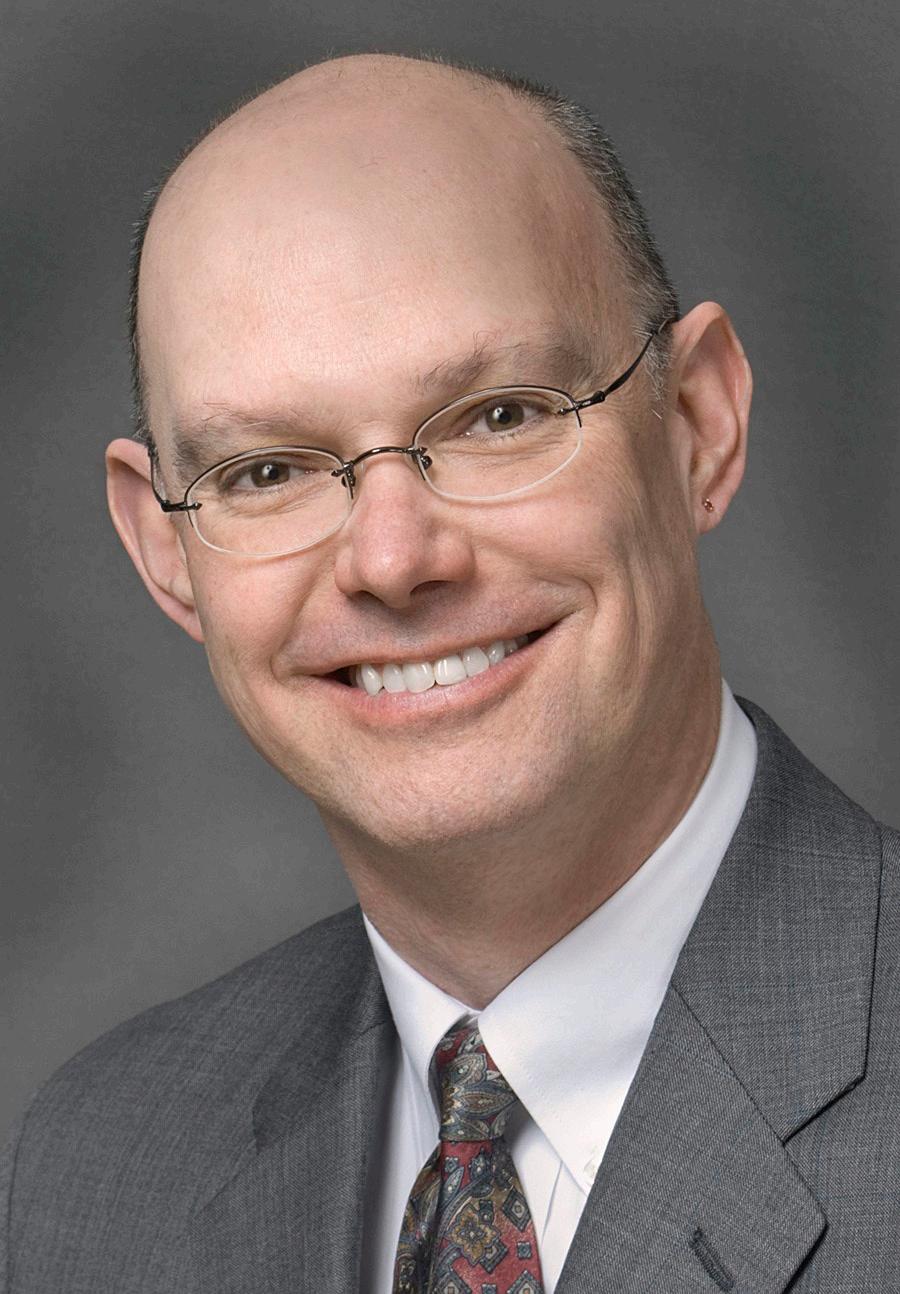
Q. Parkinson’s disease is a progressive disorder that affects the nervous system and the parts of the body controlled by the nerves. How prevalent is this disease?
A. In a study done over three years, 90,000 people per year in the United States are diagnosed with the disease, an average of one person every six minutes. The incidence here in Western New York is relatively high.
Q. What are the symptoms?
A. Masking: the individual’s muscles are not able to form facial expressions. Also, hesitation or a difference in stride when walking; tremors are very common; loss of smell and therefore the sense of taste is affected as well. Constipation is often an early symptom, too.
Q. Why is Parkinson’s so difficult to diagnose?
A. Many of the symptoms mimic other diseases. In addition, there isn’t any single blood test or brain scan available to definitively diagnose this disease. We look at a progression of symptoms and check if certain prescriptions are helping the patient. On average someone who receives a Parkinson’s diagnosis has had the disease for six to eight years before the diagnosis. This is how long it can take the symptoms to become problematic enough for the patient to seek attention. A diagnosis, once that attention is sought, can happen rather quickly.
Q. What are the objectives of the foundation?
A. Our goal is to improve the quality of life for people affected by Parkinson’s as well as their care partners, families, friends and loved ones. Our philosophy is based on three pillars: education where people can learn about symptoms and treatments; resources, which includes publications, blogs, webinars; and research that is focused on both finding a cure and improved treatments while gaining a better understanding of helping patients with life on a daily basis.
Q. How can people access those resources?
A. Our local office is at 2805 Wehrle Drive in Williamsville. Because of COVID, we are not open every day, but I recommend calling to set up an appointment. The number: is 716-301-0423. We welcome sharing our resources and answering any questions.
Q. When celebrities such as Michael J. Fox and former Congressman Jack Quinn are diagnosed with Parkinson’s, what sort of impact does that have on your foundation?
A. There have been many high-profile people with the disease, including Neil Diamond, Janet Reno, Linda Ronstadt, George H.W. Bush, Alan Alda. We’ve worked closely with Jack Quinn, who’s been a great partner and has helped us get the word out. What often happens, however, is that people don’t want to be defined by the illness. It’s not uncommon for the individual to become quiet, perhaps self-isolate. They face challenges like their voices getting quieter having a harder time getting dressed, getting in and out of a car, all of which may lead to anxiety and depression.
Q. How is your foundation funded?
A. Largely through contributions and fundraisers. We also seek grants. Our goal for the Feb. 25 Revolution fundraiser is $20,000, but we’d love to hit $30,000. Our biggest annual event is Moving Day, a walk to beat Parkinson’s. That will be on Sept. 23 (MovingDayBuffalo.org), though the site is not live yet this year. Last year’s walk raised more than $110,000.
er cognitive decline, the researchers said.
End-of-life care for patients with dementia has also changed in these years, including a lower percentage who died in a hospital bed or intensive care unit, or who had a feeding tube in their last six months of life. Nearly 63% received hospice services, up from 36%. This coincided with a national increase in hospice care overall.
“This shows we have far to go in addressing end-of-life care preferences proactively with those who are re-
cently diagnosed, and their families,” said senior study author physician Julie Bynum, a professor of geriatric medicine at Michigan Medicine.
“Where once the concern may have been underdiagnosis, now we can focus on how we use dementia diagnosis rates in everything from national budget planning to adjusting how Medicare reimburses Medicare Advantage plans,” she added in a Michigan Medicine news release.
The findings were published April 1 in JAMA Health Forum.
Ever since optometrist William Feinbloom introduced the first low vision glasses in 1936, there have been low vision solutions that, for whatever reason, are not known to the general public (unlike hearing aids.)
People with vision-limiting conditions are often frustrated because they have been told that there is nothing more that can be done for their vision when, in fact, there often is.
What is Low Vision?
Common medical definitions of low vision include:
• Low vision is vision loss that can’t be corrected with glasses, contacts, medication, or surgery;
• Low vision is a term that refers to vision 20/70 or worse;
• The International Academy of Low Vision Specialists define it as the result of having an eye condition that prevents someone from doing the things that they want to do.
What Are Common Eye Conditions That Can Cause Low Vision?
They include macular degeneration, Stargardt disease, glaucoma, ocular albinism, retinitis pigmentosa, diabetic retinopathy, stroke-hemianopsia. This is not an exhaustive list and there does need to be some usable vision to work with.
Reading books, newspapers, magazines, sheet music, labels on packaging including prescriptions. They also want to see faces, drive, play cards, crafts, watch TV, and see the food on their utensils.
What Does a Low Vision Specialist/Optometrist Do?
A low vision specialist identifies the correct hands-free device, typically a very specialized type of glasses (microscopes, telescopes, E-Scoop, prismatic reading glasses), to match the eye condition, specific vision, and task that the person wants to do. They may also recommend wearable technology. This could mean that you may need more than one device depending on what you want to see and do.
If you experience vision problems or feel concern that you could, a dietary supplement may be helpful.
However, it’s not as easy as popping an “eye formula” pill every day.
Dietary supplements to support eye health have gained traction among healthcare providers and eye specialists. But not every supplement is the same.

Andrew Reynolds, doctor of ophthalmology with UB, divides supplements into those related to a specific disease, commonly dry macular degeneration and general eye health supplements. For the former, he encourages people to look for supplements with AREDs on the label, which indicates the ingredients align with the National Eye Institute’s clinical trial on age-related eye diseases from 1992 to 2001.
“If it has the ingredients in that study, it will be on the box,” Reynolds said. “People with somewhat intermediate macular degeneration, it has been shown that supplement
slows the progression to severe by 25%.”
Macular degeneration is a progressive eye condition that causes permanent loss of central vision. More than one in three adults 75 and older will experience macular degeneration. The condition causes deterioration of the central part of the retina at the back of the eye.
“Of course, everyone wants a ‘magic bullet’ to extend our life by 20 years and give us 20/20 vision,” Reynolds said. “But there’s good evidence that a well-balanced diet is helpful.”
He added that people predisposed to vitamin deficiency should discuss supplementation with their healthcare providers.
“In this country, if you have a reasonable diet, it is rare to become dangerously vitamin deficient,” he added.
People who have undergone bariatric surgery, experience chronic alcoholism or consume vegan diets may need supplements, he offered as
As the first definition of low vision above states, a low vision specialist can’t fully correct the eye condition. What they do is improve the ability to see and, thereby do, with the person’s usable vision by enhancing, magnifying or expanding the peripheral vision.
How Do I Know if I Have Low Vision?
• Do you have a vision condition?
• Are there things that you can no longer do as a result?
• Does not being able to do these things frustrate you?
If the answer to all three of these questions is ‘Yes’, then you would benefit from a low vision consultation. If the answer to any of these questions is ‘No’, you do not have low vision (you may have poor vision.)
Can Young People Have Low Vision?
Yes. Young people can have the following conditions:
• Stargardt disease (juvenile macular degeneration);
• Nystagmus (where the eyes make repetitive, involuntary horizontal movements);
• High astigmatism (causes blurred distance and near vision);
• Congenital cataracts (a rare birth defect);
• Achromatopsia (color deficiency);
• Rod-cone dystrophy;
• Strabismus (crossed eyes);
• Amblyopia (lazy eye);
Things that young people often want to do are see the board better at school (not have to sit in the front row!), drive, and read better.
At a low vision office appointment, your low vision specialist may conduct a practical low vision evaluation per The Richard Shuldiner, OD and William Feinbloom, OD philosophy & methods of providing low vision care.
– The appointment does not involve eye drops to dilate the eyes
– The doctor uses an eye chart with larger numbers, the Feinbloom low vision chart
– Your doctor will request that you bring samples of activities that you regularly perform (stock market reading material, needlework, etc.)
– The low vision specialist will prescribe tailor-made glasses specific to your vision and what you want to do
The International Academy of Low Vision Specialists has a doctor directory on its website — www. ialvs.org. People do not need a doctor referral to make an appointment.
is an optometrist who has been serving low vision patients for over 50 years. He owns Low Vision Optometry of Western New York, which has locations in Buffalo, Rochester and Syracuse. For more information, call 866-446-2050 or visit www.kornfeldlowvision.com

examples.
For natural sources of these nutrients, Noelle Citarella, registered/certified dietitian nutritionist and integrative/functional nutrition certified practitioner with Buffalo Nutrition and Dietetics, advises eating a diet that includes foods rich in antioxidants such as dark, leafy greens; colorful fruits like oranges and blueberries; and those offering lutein and zeaxanthin, including broccoli, corn, peans, persimmons and tangerines.
“Vitamin C is an antioxidant that’s eye protective,” she said.
Sources include citrus fruits, strawberries, red bell peppers and broccoli.
“Vitamin E is also helpful, as it’s an antioxidant,” Citarella added.
Include vegetable oil, nuts, seeds, wheat germ in the diet, along with sources of omega 3 fatty acids found in fish like salmon, mackerel, anchovies, sardines and herring.
“You can also get it from black cod and halibut and some in tuna
and shrimp,” Citarella said.
Vegans can turn to algae supplements for omega 3s, although animal sources are better absorbed by the body.
Zinc also supports eye health and is found in beef, oysters, shellfish, nuts, pumpkin seeds and other seeds.
Of course, these foods should be eaten as reasonable servings as part of a balanced diet low in processed foods, added animal-sourced fat, salt and sugar and moderate in overall calories.
Poor diet, smoking, unmanaged diabetes, obesity and cardiovascular disease raise risk of vision problems such as macular degeneration. Taking care of these issues can help mitigate risk such as genetic predisposition and advanced age.
Talk with a healthcare provider about vision concerns and before making changes in diet or taking dietary supplements. Any sudden loss of vision requires immediate medical attention.

Dietary supplements to support eye health have gained traction among healthcare providers and eye specialists. But not every supplement is the same
 By Anne Palumbo
By Anne Palumbo


February may be the shortest month of the year, but it’s loaded with important holidays and events.


A lesser-known food holiday that happens on Feb. 23, but one still worthy of celebration, is National Banana Bread Day. Clearly, its founder thinks it’s the best thing since sliced bread!
Bananas, the star of this delicious quick bread, are one of the world’s most popular fruits, with annual worldwide consumption exceeding 100 billion. On average, Americans eat about 90 bananas per person every year.
Affordable and accessible, bananas have numerous health benefits that deserve some serious unpeeling.
Bananas are a rich source of carbs, which appear mainly as starch in unripe bananas and sugars in ripe bananas. Carbs provide fuel for daily activities and workouts and may also help reduce exercise-related muscle cramps and soreness. For those with diabetes, bananas can often be worked into one’s overall meal plan or as a healthy snack to aid with stable

blood sugars.
Hearts love bananas for more reasons than one. A good source of potassium—an essential mineral for maintaining normal blood pressure—bananas help keep our tickers ticking.
The fiber in bananas also does a heart good by helping to reduce blood pressure, quell inflammation, and ferry out bad cholesterol.
Lastly, bananas are high in vitamin B6, a critical vitamin that helps break down an amino acid (homocysteine) that, when elevated, has been linked to greater heart disease risk.
As mentioned, bananas boast a decent amount of fiber, with one banana providing about 3 grams of both soluble and insoluble fiber. In addition to lowering cholesterol levels, a banana’s soluble fiber absorbs water in the gut, which then forms a gel that slow downs digestion, keeps you feeling full, and slows the stream of sug- ar into your blood.
Insoluble fiber, on the other hand, adds bulk to your stool, which helps keep you regular. In general,











foods that are high in fiber help with both weight maintenance and loss.
Just over 100 calories, nutrient-rich bananas are also a good source of immune-boosting vitamin C and have no fat, cholesterol or sodium.
Adapted from wellplated.com
1½ cups ripe bananas, mashed (about 3-4)
1 large egg
1/3 cup plain Greek yogurt
2 tablespoons canola oil (or substitute applesauce)
1/3 cup light brown sugar



¼ cup pure maple syrup
1 teaspoon pure vanilla extract
1 teaspoon baking soda

½ teaspoon ground cinnamon ½ teaspoon salt



1½ cups white whole wheat flour

¾ cup chopped walnuts or pecans
Place the rack in the center of your oven and preheat the oven to 350 F. Lightly grease a 9-by 5-inch loaf pan and set aside.
Mash the bananas in the bottom
of a large bowl until mostly smooth.
Whisk in the egg, then the yogurt and oil.
Whisk in the brown sugar, maple syrup, and vanilla. Sprinkle the baking soda, cinnamon, and salt over the top, then stir until combined. Gently stir in the flour until barely combined, then fold in any mix-ins.
Scrape the mixture into the prepared pan. Bake for 50 to 60 minutes, until a toothpick inserted in the center comes out clean. Check at the 35-minute mark and tent with foil if the bread is browning too quickly at the corners. Place the pan on a wire rack and let cool for 15 minutes. Remove from pan and place on rack to finish cooling completely (for neat slicing), or enjoy warm and don't worry if the slices are messy.
TO MAKE MUFFINS: To bake this recipe as 12 muffins instead of a loaf, lightly grease a standard muffin tin, then divide the batter evenly among the cups. Bake at 350 F for 20 to 22 minutes, until a toothpick inserted in the center comes out clean and the muffins spring back lightly when touched.
Anne Palumbo is a lifestyle columnist, food guru, and seasoned cook, who has perfected the art of preparing nutritious, calorie-conscious dishes. She is hungry for your questions and comments about SmartBites, so be in touch with Anne at avpalumbo@aol.com.


For decades, one health ailment continues to dominate as the most severe. Heart disease is the leading cause of death for men, women and people of most racial and ethnic groups in the United States, according to the Centers for Disease Control and Prevention.
One person dies every 34 seconds in the United States from cardiovascular disease.
It is a condition that remains a health issue globally. The World Health Organization states cardiovascular diseases are the leading cause of death globally, taking an estimated 17.9 million lives each year.
Cardiovascular diseases are a group of disorders of the heart and blood vessels and include coronary heart disease, cerebrovascular disease, rheumatic heart disease and other conditions.
Brian James Riegel, a cardiologist in Williamsville and affiliated with Great Lakes Cardiovascular, answers some frequently asked questions about heart ailments.
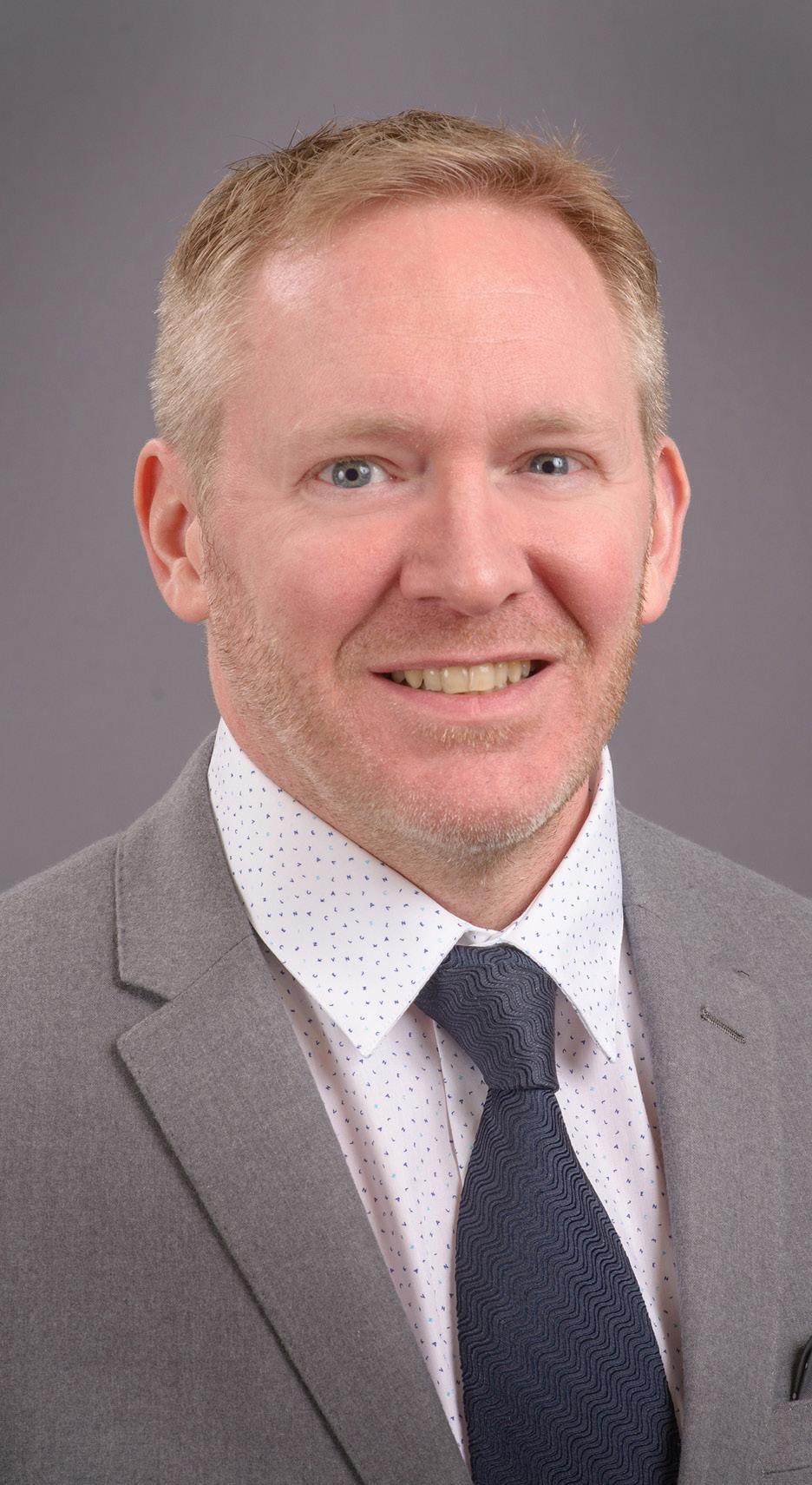
Having a family health history of heart disease makes you more likely to develop heart disease yourself. In some cases, having family members with heart disease at age 50 or younger can be a sign of familial hypercholesterolemia, a genetic disorder that causes high cholesterol, according to the Centers for Disease Control and Prevention. Health officials suggest taking time to collect your family health history of heart disease and share this information with your doctor and other family members.
“First-degree family members include your mother, father and siblings. If your father or brother by age 55 has had a heart attack or required coronary stenting or bypass surgery or has had a mini stroke or stroke, or if your mother or sister by age 65 — then you have a family history of heart disease. If you do have this family history, then your risk for developing cardiovascular disease is also increased,” said Riegel.
2.Do men and women have different types of heart attacks?
The most common symptom of a heart attack for both men and women is pain or pressure in the center or left-center of the chest. Recently, studies have shown that women experience heart attacks quite differently than men. Both men and women can also experience pain in the jaw, neck, arms, shoulders, back or upper abdomen.
“Generally any pain in the center or left side of the chest which is brought on with activity or exertion or mental stress, and relieved with rest, is definitely a cause for concern. Sometimes this radiates up into the left shoulder and arm, or neck or jaw, in both men or women,” said Riegel. “The difference being that many women often experience other symptoms, apart from chest discomfort, such as shortness of breath, fatigue, nausea, sweating, dizziness, shoulder or elbow pain. Unfortunately this often leads women to put off seeking medical attention as the symptoms do not clearly seem heart-related, at least at first impression. It is important for both men and women to let
Most people associate cardiovascular disease with adults.
But everyone — including children, teens and young adults — can develop heart issues either due to congenital causes, lifestyle or other risk factors that develop over time.
Most common are heart attack, stroke, heart failure, arrhythmia and heart valve complications. With heart ailments being so serious, it is essential to understand various factors that lead to the issue. Cardiologists have to deal with myths and misconceptions such as people thinking if you are young you don’t have to worry about heart disease to others who may not understand they have underlying symptoms that could elevate the situation.
“No one is immune to the devastating effects of heart disease. So it’s important that everyone take a vest-
ed interest in their heart health by eating well, exercising regularly, not smoking and working with a doctor to monitor any changes,” said Vijay Iyer, interventional cardiologist and the director of the structural heart program at Kaleida Health in Buffalo.

He talks about some of the factors that affect heart issues.
• Family history affects heart health — Knowing your family history is the first step in taking control of your heart health. If you have a family health history of heart disease, you are more likely to develop heart disease yourself.
“Different types of heart disease and related conditions, like high blood pressure and high cholesterol, can run in families as well. Based on this information, your doctor may suggest steps to prevent or treat heart disease,” said Iyer.
their primary care provider know about any potentially concerning symptoms.”
are some symptoms that you see in youth and
There can be significant differences between heart ailments for youth and adults. Patients who are younger than 18 typically get diagnosed with some type of congenital heart disease.
“I often see both younger and older patients who are complaining of palpitations. This is a common reason patients get referred to a cardiologist. Palpitations come in different forms. Sometimes they are a sensation of skipped beats or fluttering or irregularity with intermittent forceful beats which catch the patient’s attention and can often be quite concerning,” said Riegel.
Other times palpitations could be more of a sustained heart racing or pounding sensation. Many times the symptoms are just related to some extra beats called PVCs which generally are not harmful, but it is important that the cardiologist does appropriate testing to make sure they are not a marker of something more serious.
“However, if there are other concerning symptoms such as persistent cough, difficulty lying flat at night, sudden weight gain or inappropriate swelling in legs or belly, this could be a sign of a more serious heart problem. We would perform the necessary testing to sort this out,” said Riegel.
a huge difference in our long-term outcome,” he said.
are some myths you would like to dispel about heart issues?
It’s easy to be fooled by misconceptions. Relying on false assumptions can be dangerous to your heart.
“I hear patients tell me they generally feel OK and try to stay active; but hypertension is the silent killer. Over time, this puts increased stress on the heart which leads to problems down the road including increased risk for heart attack, stroke or congestive heart failure as we get older. It is better to identify this earlier rather than later, as prevention can make
• Cholesterol affects heart health — High cholesterol levels are linked to a higher risk of heart disease, heart attack and stroke. High cholesterol can result in fatty deposits forming in your blood vessels, limiting the amount of blood flow over time.
“Heart attacks and strokes occur when these deposits break off and form a clot in the arteries, completely cutting off blood flow. Eating a heart healthy diet, quitting smoking and exercising regularly can help lower cholesterol,” said Iyer.
• Lack of exercise affects heart health — Sedentary lifestyles increase all causes of mortality, double the risk of cardiovascular diseases, diabetes, obesity and increase the risks of colon cancer, high blood pressure, osteoporosis, lipid disorders, depression and anxiety.
“Aerobic exercise such as brisk walking, running, swimming, cycling, playing tennis or jumping rope, improves circulation, which results in lowered blood pressure and heart rate. Doctors will typically recommend 30 minutes per day about fivesix days per week,” said Iyer.
• Smoking affects heart health — The chemicals in tobacco can damage
There are a lot of ways people can improve heart health and reduce their risk of heart disease. Healthy behaviors like watching your diet and exercising regularly are important, along with avoiding the use of tobacco, alcohol or drugs.
“Another common reason patients are sent to a cardiologist is shortness of breath. Many times this is just related to relative physical inactivity and so the recommendation is to start or resume or increase a more regular exercise regimen in order to improve conditioning and lose weight,” he added.
the heart and blood vessels. Cigarette smoke reduces the oxygen in the blood, which increases blood pressure and heart rate because the heart has to work harder to supply enough oxygen to the body and brain.
• Manage stress — Some people cope with stress in unhealthy ways such as overeating, drinking or smoking. Finding alternative ways to manage stress helps. “Relaxation exercises or meditation can help improve your overall heart health,” said Iyer.
For years, health experts touted vitamin D as a companion supplement to aid in absorption of bone-strengthening calcium. Then vitamin D became a veritable panacea and research linked it to supporting nearly every bodily function and system. More recently, the importance of vitamin D has been minimized.
A recent article by the Cleveland Clinic stated that people who are healthy and not undergoing treatments for health problems should not bother taking vitamin D.
WebMD cites several research studies in a recent article to show that vitamin D isn’t a superstar supplement, as it does not appear to
lower risk of cancer, stroke or heart attack as once thought (although its role in calcium absorption remained intact).
The National Institutes of Health link excessive vitamin D with stomach discomfort, unusual mental symptoms, and kidney problems.
“There are definite studies that vitamin D deficiency has been linked to autoimmune diseases,” said Noelle Citarella, registered and certified dietitian nutritionist and integrative/functional nutrition certified practitioner at Buffalo Nutrition and Dietetics, PLLC in Buffalo. “Really, the best thing to do is to know your status. You can over supplement.”
World Kidney Day will be celebrated globally on Thursday, March 9. This year’s theme is “Kidney Health for All — Preparing for the Unexpected, Supporting the Vulnerable.”
Worldwide, 850 million people are affected by chronic kidney disease and more than 2 million people receive dialysis or are living with a kidney transplant.
In the United States, about one in seven adults has kidney disease. People with kidney disease are among the most vulnerable populations in an emergency because of their ongoing need for consistently coordinated care, which is often lifelong and involves complex ongoing treatment.
Recognizing the challenges faced by kidney patients and caregivers, the Kidney Foundation of Western New York is sharing emergency preparedness tips:
• Those with chronic health conditions should prepare an emergency kit that includes food, water, medical supplies, and medical records. Check items every six months to ensure
medications have not expired, that food is still fresh, and batteries are working.
• People who rely on dialysis should stock up on food items for the 3-day emergency kidney diet. This diet can reduce the buildup of fluids and toxins within the blood when dialysis treatment is not available.

• Dialysis recipients, transplant recipients and people with diabetes should wear a medical ID bracelet or pendant that indicates medical conditions and any allergies.
• People receiving in-center dialysis should make sure that the dialysis clinic has current address, phone number and emergency contact information.
• People on home dialysis should inform their local power company. This will make their service a priority if there is a power outage.
Emergency preparedness handouts are available from the Kidney Foundation of Western New York, dialysis providers and the IPRO End Stage Renal Disease Network of New York.
Taking too much of anything can be problematic, so patients should ask their primary care provider to test their vitamin D level to see if supplementation is needed and receive guidance as to how much. Most providers will not bring up vitamin D as part of a routine visit.
Vitamin D supplements are not all the same.

“There is a lot of mixed research on D-2 and D-3,” Citarella said. “Some studies say D-2 raises levels as much as D-3. The safe bet is to assess your status and know.”
The body generates vitamin D when exposed to sunlight. That is why it is difficult to measure the body’s vitamin D level without testing.
“In Western New York, a large part of our population has low vitamin D because we don’t get sunlight six months of the year,” said Amy Beney, registered dietitian at Nutrition Insights, PLLC in Lockport.

She noted that vitamin D has been associated with supporting immune function, emotional health, and bone health. But since vitamin D supplements are not FDA regulated like medication, the supplements do not have the same amount of research that a prescription drug would garner.
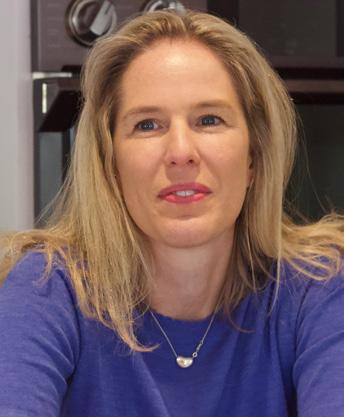
Only a handful of foods contain vitamin D and most of them are fatty fish. Egg yolks and mushrooms grown in sunlight as sources, along with fortified foods.
The daily value for vitamin D is 800 IU (20 mcg). Few naturally occurring food sources of vitamin D-3 exist and most of those are fish. Mushrooms provide only traces of the less helpful D-2 and they are the only vegan, non-supplemental source of either type of vitamin D.
Egg yolk contains 37 IU of vitamin D, although pastured hens may provide three to four times that amount because of their exposure to sunlight. Cod liver oil boasts 450 IU per teaspoon.
Canned light tuna offers 269 IU per 3.5-ounce helping.
Try 3.5-ounce servings of these fish for more D-3:
• Salmon 526 IU
• Fresh Atlantic herring 214 IU
• Canned sardines 193 IU
• Halibut 190 IU
• Mackerel 643 IU
In addition to milk, fortified foods include some brands of breakfast cereal, orange juice and yogurt.
“The whole of society, including policymakers, health care services, governments, industry, as well as people living with kidney disease, must be prepared for unexpected events to avoid any disruption in access to diagnosis, treatment, and care,” the International Society of Nephrology noted in announcing this year’s World Kidney Day theme.
Submitted by The Kidney Foundation of Western New York. More information is available at kfwny.org and the Kidney Foundation of Western New York’s social media. The foundation can be reached by phone at 716-529-4390.
The Peace Bridge will be illuminated in yellow and blue on the evening of March 9, with Niagara Falls lit up in yellow and blue beginning at 10 p.m. Other local landmarks will be illuminated yellow, blue and green for kidney health that night.

A recent article by the Cleveland Clinic states that people who are healthy and not undergoing treatments for health problems should not bother taking vitamin D — local experts weigh inNoelle Citarella Amy Beney
Managing Type-2 diabetes as an older adult is a little more complicated than with younger people. Often by this stage in life, other health issues have arisen. Doctors tell diabetic patients to exercise. However, by this stage of life, more limited mobility from arthritis or injuries can make it more challenging to work out. The care for other health conditions can make it difficult to take on all of the care necessitated by diabetes, such as managing blood pressure and cholesterol, smoking cessation, annual eye exams, careful foot care, annual urine and blood tests for kidney health and dietary changes.
Seeking help from a certified diabetes educator can assist in managing the various aspects of the condition. Dietary changes may be most difficult of all, but one of the most needful, and a dietitian or a certified diabetes educator can help. Some people may find it difficult to make in-office visits.
“If they are comfortable with doing things over the phone or are tech savvy enough to use a phone camera, they can achieve the same things as in the office with diabetes of education,” said Noelle Citarella, registered/certified dietitian nutritionist at Buffalo Nutrition and Dietetics, PLLC in Buffalo. “First lesson on the glucometer should be in-person, but they can still achieve blood sugar management through virtual follow-ups.”
Most insurers still cover virtual
visits.
Some older adults find difficult the dietary changes brought by Type2 diabetes, particularly if they’ve never cooked much or at this point in life, find cooking difficult.
“The diabetes educator can tailor specifics,” Citarella said. “The Hungry Man frozen dinner looks like the equivalent of a meal, but looking at the fiber and protein, it’s not balanced.”
She helps clients find meals with non-starchy vegetables that won’t spike blood sugar. Healthy Choice brand offers one example.
“The biggest take-home message is any small changes you make shows big results,” said Samantha Paolini, registered dietitian in practice in Buffalo. “Good nutrition is so important with diabetes management. Limiting sugary beverage intake and having three meals a day is a good step.”
Ideally, pairing high fiber meals with protein helps stabilize blood sugar. Paolini recommends whole grains, whole fruits and vegetables, beans and lentils.
“Balance those with a lean protein source like chicken, poultry and lean red meat,” she added.
To stick with the healthful diet, it helps to stock up on easily prepared foods that are more healthful, such as steam-in-the-bag frozen vegetables and brown rice. Eating half a bag of steamed vegetables makes it easy to not waste food, as the other half may be eaten at another meal.
Hearing evaluations are routine for children born in US hospitals. However, hearing loss acquired afterwards can go undetected. It’s important to catch hearing loss early, as young children are at a crucial developmental stage.
“A lot of studies say that even minimal hearing loss can affect children’s ability to learn speech and language,” said Salvatore Gruttadauria, audiologist with Diversified Hearing & Balance Centers in Buffalo.

But it is easy to miss a hearing loss.
Some children have an anatomical predisposition to ear infections and if they develop them chronically, along with the typically impairment of hearing, they may miss numerous months of hearing clearly and learning language.
Causes of permanent hearing loss include illnesses such as mumps, measles and other childhood disease that are preventable with routine childhood vaccinations. A high fever
that goes unchecked can destroy the auditory nerves and thus the child’s hearing. A fever treated with Tylenol that remains higher than 103 degrees Fahrenheit in otherwise healthy children warrants immediate medical attention. Seek care for any fever in babies younger than 3 months old. For those 3 to 6 months, 102 Fahrenheit is considered a high fever.
Gruttadauria said that parents also should seek an evaluation for children who ask for parents to repeat what they say, turn up the TV or other devices, or their teachers at school say they do not pay attention.
“Beyond traditional hearing problems, there’s also an auditory processing problem,” Gruttadauria said. “The person cannot make use of what they hear. They can hear directions, but they can’t remember it, so they don’t follow through with it.”
He likened the effect of attending a play among noisy audience members. The unwanted sounds make it difficult to understand the dialogue.
Cooking ahead and freezing individual portions can also help on days when cooking from scratch is too tiring.
“These tips also help with portion size,” Paolini said. “If you make a big pot of soup and you freeze portions, it’s there for you.”
My Plate for Diabetes indicates filling half of a standard nine- or 10inch plate with non-starchy vegetables raw or cooked, and the other half of the plate with lean protein and starchy foods, about one-quarter each.
Any snacks should pair carbohydrate sources with protein sources, such as fruited yogurt, cheese or cottage cheese with a whole grain cracker or peanut butter on slices of apple.
Exercising regularly can help maintain blood sugar stability.
Paolini tells clients to “do what you can physically.”
Clarifying the speech signal can help children distinguish that from background sounds, he added.
Early milestones include infants startling at louder noises and by 3 to 6 months, beginning to turn their heads towards the source of sounds to localize it.
“Some parents say, ‘They just don’t listen to me,’ so you can try little things like clickers or hand claps to see if they’ll attend to those sounds,” Gruttadauria said. “When you’re doing those types of things, you’re testing both ears at the same time, not isolating the ears. A child could have a problem in one ear. They could seem like they’re OK but could have a problem in the other.”
Sometimes, parents test their children’s hearing by only using loud sounds. However, everyday speech volume, between 55 and 65 dB should be loud enough to hear. Having to speak louder to be heard may indicate mild hearing loss and warrant seeing a professional.
“There are clearly defined developmental milestones for infants and young children as it relates to their hearing and speech development,” said Jill Bernstein, audiologist with Hearing Evaluation Services of Buffalo, Inc. “Even if an infant passes their newborn hearing screening, parents and pediatricians should still be mindful of these milestones and
Swimming, elliptical workouts and senior yoga all represent forms of exercise gentle for people with arthritis. A good goal could be to increasing activity to a goal of 150 minutes a week minimum, broken into 30-minute brisk walks five days a week along with weight training two days a week to improve lean body mass.
Paolini also tells people with diabetes to go to their regular check-ups with their physicians. They should also keep their healthcare provider abreast of any changes in diet, medication, supplements and over-thecounter items.
Although it may be more challenging for older adults to maintain healthy blood glucose levels if they have comorbidities, poor health or cognitive decline, Paolini said that making these changes can positively impact quality of life.
have a child retested if they start to fall behind.”
She said that in addition to startle reflex and sound localization, by 6 to 12 months, children should start recognizing familiar words and respond to their names.
In older children, “appearing to need face-to-face contact to hear clearly” may indicate a problem, she added.
“Any time there is parental concern about either hearing or language development, a hearing test is recommended,” Bernstein said.
Pediatrician offices can run basic screening tests and an audiologist can provide more in-depth testing and evaluation.
Many aspects of health change as you enter older adulthood, including nutritional needs. With lessening activity, caloric needs may decrease, but the same amount of nutrients — and in some instances, more — are still needed.
“More and more research is coming out that you need more protein as you age to prevent lean body mass loss,” said Noelle Citarella, registered and certified dietitian nutritionist and integrative/functional nutrition certified practitioner at Buffalo Nutrition and Dietetics, PLLC in Buffalo. “In practice, people aren’t eating as much as they need to.”
She added that because stomach acid decreases in older age, it can be more difficult to break down proteins and absorb B-12 and other nutrients, which can put older adults at risk for deficiencies.
Decreased appetite and poorer diet may be in part because of lower activity levels, but also issues such as decreased enjoyment of food and a shift in preference. As the sense of taste and smell may decline, a person’s food choices often shift towards sweet, salty foods and “comfort foods” and away from things such as vegetables, beans and whole grains. Replacing a balanced meal with crackers, chips, processed foods and pieces of candy can lead to malnutrition and weight gain.
Instead, finding ways to season wholesome foods like chicken breast with herbs and spices can keep an older adult on target. Homemade soup that includes plenty of vegetables, beans and meat can offer more protein and variety to the diet and less sodium than canned chicken noodle soup.
Difficulty in chewing can skew older adults away from nutritious foods such as meat and nuts. Citarella recommends trying nut butters, stewed meat, hard boiled eggs and Greek yogurt to boost protein intake among people with dental issues.

Thinking outside accustomed foods can lead to more nutritious food choices. For example, a smoothie that combines raspberries with a less palatable vegetable like kale or carrots can make it easier to consume more veggies. Or, snacking on hummus with whole grain crackers instead of potato chips and French onion dip.
Protein shakes represent an easy way to increase protein intake.
A tight budget can make protein sources seem out of reach. Citarella mentioned canned tuna and chicken as economical sources of protein.
“If they’re worried about mercury, some companies can only low-mercury tuna,” she added.
Many older adults are under-hydrated as they want to not have to
The U.S. Food and Drug Administration in January approved a second Alzheimer's drug, lecanemab, despite reports of rare brain bleeds linked to use of the drug in some patients.
However, the FDA pointed to the drug's benefits, as well.
“Alzheimer's disease immeasurably incapacitates the lives of those who suffer from it and has devastating effects on their loved ones,” physician Billy Dunn, director of the office of neuroscience in the FDA's Center for Drug Evaluation and Research, said in an agency news release. “This treatment option is the latest therapy to target and affect the underlying disease process of Alzheimer's, instead of only treating the symptoms of the disease.”
Lecanemab, made by Eisai and marketed by Biogen as Leqembi, will be only the second Alzheimer's drug to receive the FDA's blessing in the past 18 months; the agency's speedy approval of the drug Aduhelm in June 2021 generated controversy in










the medical community over its lack of effectiveness, brain bleed concerns and hefty price tag.
But Alzheimer's experts said the story is somewhat different with Leqembi.
"Unlike Aduhelm, which had an incomplete data set and where clinical trial data failed to demonstrate a definitive slowing in cognitive decline, lecanemab showed statistically significant slowing in cognitive and functional decline, as well as reduction of brain amyloid levels, and downstream beneficial effects on other markers of neurodegeneration," physician Sarah Kremen, who leads the Alzheimer's Disease Clinical Trials Program at Cedars-Sinai in Los Angeles, said in a statement.
“We need — and are on the way to having — multiple drugs we can combine to personalize treatments to match each patient's Alzheimer's pathology, which will have a much greater impact on slowing the disease,” physician Howard Fillit, co-founder and chief science officer
rush to the bathroom, especially at night. Citarella said that the sensitivity to thirst decreases in older adulthood but not the need for hydration. Not drinking enough can contribute to constipation, urinary tract infections and numerous serious health issues.
“To ensure adequate hydration, it helps to take along a filled water bottle,” Citarella said. “The best thing to do is get a large water bottle they can easily drink from with a straw.”
Adding a slice of lemon, a few frozen berries or a cucumber slice can help keep water more palatable.
For some older adults, accessing food is difficult because of physical impairments, which means they subsist on less nutrition.
“Food insecurity for the elderly is multi-faceted,” said Amy Beney, registered dietitian with Nutrition Insights, PLLC in Lockport.
It’s not just transportation, but also the ability to navigate a store safely and difficulty in hauling groceries from store to car and car to the kitchen. Beney recommended looking into grocery delivery companies such as Instacart or Amazon to automate grocery delivery.
For those who eschew technology, signing up with Gogo Grandparent can make ordering groceries as simple as making a phone call from any phone (even a landline). A live operator takes seniors’ requests for things like restaurant orders, grocery delivery and even rides to the grocery store or elsewhere and makes all the arrangements through apps such as GrubHub, Instacart and Uber.
“When elderly people live alone,
of the Alzheimer's Drug Discovery Foundation, said in a statement.

“Today's news is incredibly important and a source of optimism not only for patients, but also for the medical and research community,” said Fillit. “It shows us that our years of research into what is arguably the most complex disease humans face is paying off.”
Still, Leqembi has been linked to two deaths from brain bleeds among people who used it in trials.
And not every patient would stand to benefit from Leqembi, stressed the Cleveland Clinic's Babak Tousi, a medical doctor. He led the portion of the clinical trial that was conducted at the Cleveland Clinic, in Ohio.
“The trial was designed for patients in the earlier stage of Alzheimer's disease, people with mild cognitive impairment or early stage of dementia,” Tousi noted. “It will probably be for people who have early stage of disease, with no to minimal assistance needed for activities of daily living.”
The results of the 18-month trial, which involved about 1,800 patients, gained wide attention when they were published Dec. 1 in the New England Journal of Medicine, Tousi noted.
In the trial, early-stage Alzheimer's patients who took Leqembi showed a 27% reduction in their


they don’t have the same desire to cook,” Beney said. “They’re not preparing meals for other people.”









As one option, congregant meals settings can “provide not only a meal but the social aspects,” Beney said.
Citarella reminds older adults that farmers’ market coupons for eligible seniors (www3.erie.gov/seniorservices) can help make food more affordable and offer a good reason to get out and socialize. The site also details how to obtain curbside pickup of frozen meals for seniors, a good option for people without friends and family to help.
Meal delivery, such as Meals on Wheels (www.feedmorewny. org) or companies like 95 Nutrition (www.95nutrition.com) and RealEats (www.realeats.com) can make obtaining healthful food even easier. The companies offer ready-to-heat meals with a few dietary options.
mental decline compared to patients in the placebo arm of the trial. The drug's users also showed less evidence of amyloid protein plaques in their brain compared to non-users.
“Lecanemab clearly did what it was designed to do — it removed amyloid plaque,” said Tousi, who heads the Clinical Trials Program at the Cleveland Clinic Center for Brain Health. “The results demonstrated all the downstream effects we hoped would happen in terms of reduction of biomarkers and less clinical decline on several functional and cognitive measures. So, this difference will likely translate to a longer period of independent living for patients.”
Financial education helps people learn about savings, credit and loans. It also helps prepare people for life changes and weather the unexpected. Financial knowledge is essential when planning for retirement.
So, how prepared are adults in the United States for their retirement? The National Endowment for Financial Education (NEFE) conducts polls on key issues, like retirement savings, that affect a person’s financial past, present, and future.
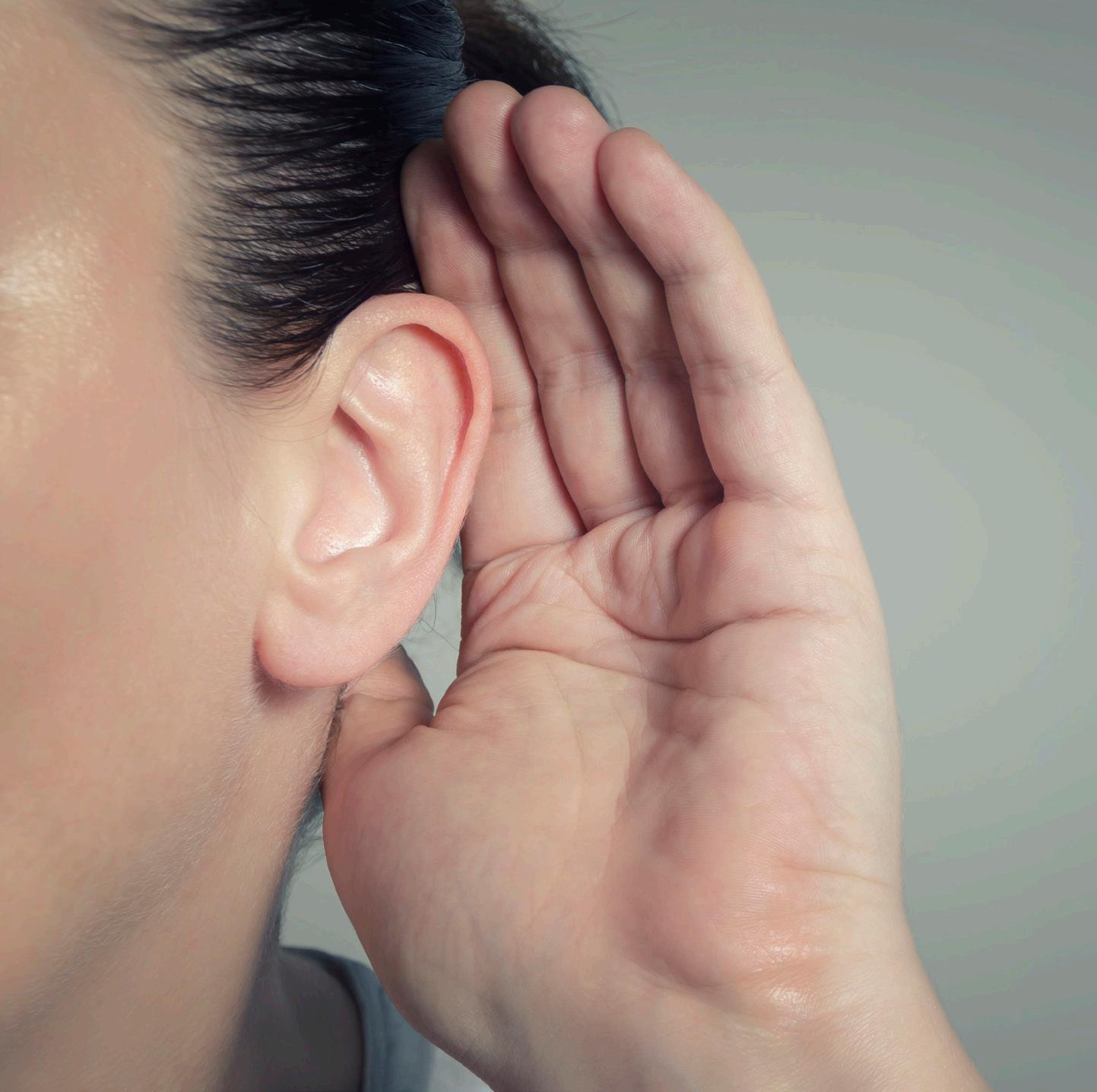 By Deborah Jeanne Sergeant
By Deborah Jeanne Sergeant
Many people associate hearing loss with older war veterans or people who have worked for 40 years in a noisy factory.
However, many less well-known things can cause hearing loss. For example, unmanaged diabetes can bear many life-altering consequences, but hearing loss is not one many people consider.
“There are a lot of common medical conditions that occur as people age that increase their risk of progressive hearing loss,” said Jill Bernstein with Hearing Evaluation Services of Buffalo, Inc. “In particular, high blood pressure and high cholesterol increase the risk of hearing loss because of how they affect our circulation. The cells of the ear that are essential for hearing need good blood circulation. Also, hearing loss is twice as common in adults with type-2 diabetes and 30% higher in adults who are pre-diabetic.”
The middle ear bones are part of the hearing process. When bony deposits accumulate on these bones (ossification), they become so stiff that their ability to conduct sound lessens. Surgery can treat this kind of hearing loss.
Salvatore Gruttadauria, audiologist with Diversified Hearing & Balance Centers in Buffalo, said that a cholesteatoma can cause hearing loss as these non-cancerous cysts can destroy the small bones in the ear that convey sound to the auditory nerve.
“Their auditory nerve still functions well, but the system in which sound is conveyed to the nerve is destroyed,” he explained. “The hearing can be very impaired. They might notice draining or fluid. It might feel like increased pressure. If they go for a hearing test, there are signs we’d look for. For the most part, it’s one of those things that people don’t recognize they have it until it’s too late.”
Meniere’s disease is another
cause of one-sided hearing loss because of one of the fluids in the inner ear is too high. Tinnitus and occasional vertigo can accompany it. Treatment includes medications to manage the vertigo and nausea, diuretics and anti-anxiety medications.
Some medications can cause hearing loss. Called ototoxic, the amount of the medication taken matters. Patients should discuss the risks and benefits of all medication.
“Another thing less common is autoimmune inner ear disease,” Gruttadauria said. “The immune system attacks good cells in the inner ear. It can cause hearing loss and dizziness. We consider something like that a medical emergency. People need to see their audiologist right away.”
Many times, people attribute hearing loss to the aging process. That typically is symmetrical, although non-age-related hearing loss can by asymmetrical.
“The other thing that people should look for is sudden hearing loss,” said Gruttadauria. “Sudden sensory neural hearing loss is when suddenly a person loses their hearing or part of it is decreased. Most people think when that happens that they have fluid or wax in their ears. In many cases, it is an infection, more commonly viral that hits one or both ears, usually one.”
He urges people experiencing this to seek medical attention immediately.
“Once diagnosed, there are things we can do to reverse it,” he said. “If you wait too long, the window of opportunity is gone. That is much more common than you would think.”
He said that has seen patients who thought wax build-up caused their muffled hearing, only to learn too late that their viral infection has permanently damaged their hearing.
Here’s what we have learned over the past year:
• In a financial well-being poll conducted during the COVID-19 pandemic, 85% of respondents confirmed that some aspect of their personal finances was causing them stress. For 31% of respondents, that concern was “having enough saved for retirement.”
• In that same poll, 70% said they made financial adjustments due to the COVID-19 pandemic. Of that group, 27% increased contributions to their emergency savings, retirement savings, or other savings or investments. In comparison, 21% tapped into emergency savings—or borrowed against retirement savings.
Q.: My spouse doesn't have enough work credits to qualify for Social Security retirement benefits. Can they qualify on my record?
A.: A spouse receives one-half of the retired worker's full benefit unless the spouse begins collecting benefits before full retirement age. If the spouse begins collecting benefits before full retirement age, the amount of the spouse's benefit is reduced by a percentage based on the number of months before he or she reaches full retirement age. You can learn more by reading our online publication, Retirement Benefits, at www.ssa.gov/pubs.
Q.: Is it true that a person can own a home and still be eligible for Supplemental Security Income (SSI) benefits?
A.: Yes. A person who owns a home and lives in that home can be eligible for SSI benefits. Although there is an asset limit for people to qualify for SSI, some things don’t count toward that limit, such as a house, a vehicle, and some funds set aside for burial expenses. To learn more about SSI and the eligibility requirements, browse our booklet, "Supplemental Security Income (SSI)" at www.ssa.gov/pubs/11000.html.
• In a poll about financial education mandates, 80% of adults said they wish they were required to complete a semester- or year-long course focused on personal finance education during high school. Also, 88% think their state should require a semester- or year-long course for high school graduation.
• In that same poll, 84% of those approaching retirement age said “spending and budgeting” should be taught in schools.
Lifetime financial education can be a helpful tool in preparing for retirement. This includes understanding Social Security retirement benefits and making the most of retirement income. You can learn more on our retirement page at www.ssa. gov/retirement.
A personal my Social Security account should be a part of your financial plan. With a secure my Social Security account, you can verify your earnings history, get personalized retirement benefit estimates, and more. If you don’t have an account, you can easily create one at www.ssa.gov/ myaccount.
To learn more about NEFE’s mission, visit their website at www.nefe. org. Please share this information with friends and family.
Q.: I am expecting a child and will be out of work for six months. Can I qualify for short-term disability?
A.: No. Social Security pays only for total disability — conditions that render you unable to work and are expected to last for at least a year or end in death. No benefits are payable for partial disability or short-term disability, including benefits while on maternity leave.
Q.: I have been getting Social Security disability benefits for many years. I’m about to hit my full retirement age. What will happen to my disability benefits?
A.: When you reach full retirement age, we will switch you from disability to retirement benefits. But you won’t even notice the change because your benefit amount will stay the same. It’s just that when you reach retirement age, we consider you to be a retiree and not a disability beneficiary. To learn more, visit www.ssa.gov.
What steps need to be taken after a loved one dies? My 71-year-old uncle, who’s divorced with no children, has terminal cancer. He’s asked me to take care of his affairs so I would like to find out what I need to do after he passes away.

I’m very sorry to hear about your uncle. The death of a loved one can bring about a host of different tasks and responsibilities. Here’s a list of some things you can do now, and after his death, that can help keep a sad event from becoming even more difficult.


There are several tasks you can do now while your uncle is still living that will make things easier for you after he dies.
For starters, find out where he keeps all his important papers like his trust or will (also make sure it’s updated), birth certificate, Social Security information, life-insurance policies, military discharge papers, financial documents, key or combination to a safe deposit box or a home safe. Also make a list of his digital assets (including usernames and passwords) like his email account, online banking accounts, social media accounts, etc.
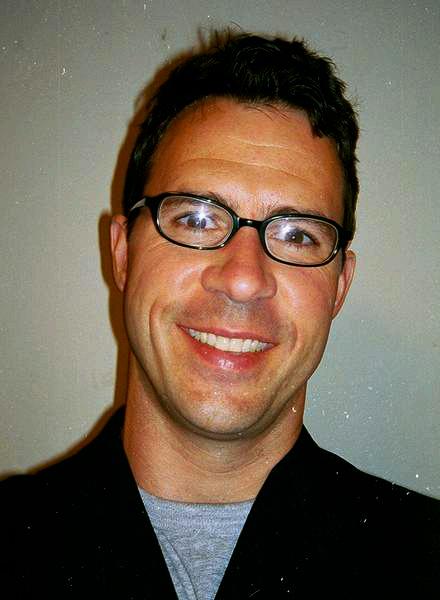
If your uncle doesn’t have an advanced directive, help him make one (see CaringInfo.org for free state-specific forms and instructions). An advanced directive includes a living will that specifies his end-oflife medical treatments and appoints a health-care proxy to make medical decisions if he becomes incapacitated. In addition, you should also make a do-not-resuscitate (DNR) order. Your uncle’s doctor can help you with this.
You should also pre-arrange his funeral, memorial service and burial or cremation.

Once your uncle dies, you’ll need to get a legal pronouncement of death. If no doctor is present, you’ll need to contact someone to do this.
If he dies at home under hospice care, call the hospice nurse, who can declare his death and help facilitate the transport of the body.
If he dies at home without hospice care, call your uncle’s doctor. You’ll then need to call the funeral home, mortuary or crematorium to pick up the body. If your uncle is an
organ or tissue donor, contact the funeral home or the county coroner immediately.

If funeral plans were not pre-arranged, you’ll need to make arrangements and prepare an obituary. If your uncle was in the military or belonged to a fraternal or religious group, you should contact those organizations too, because they may have burial benefits or conduct funeral services.
You should also notify family members, close friends and his employer if he was still working, and make sure his home is secured.
To wind down your uncle’s financial affairs, you’ll need to get multiple copies of his death certificate, which are typically ordered by the funeral home.
If you’re the executor of your uncle’s estate, take his will to the appropriate county or city office to have it accepted for probate. And open a bank account for your uncle’s estate to pay bills, including taxes, funeral costs, etc.
You also need to contact your uncle’s estate attorney if he has one; tax preparer to see if estate or final income taxes should be filed; financial adviser for information on financial holdings; life insurance agent to get claim forms; his bank to locate and close accounts; and Social Security, the VA (if he’s a veteran) and other agencies that provided benefits in order to stop payments.
You should also cancel his credit cards, delete or memorialize his social media accounts and, if relevant, stop household services like utilities, mail, etc. His home and personal belonging will also need to be dealt with in the coming weeks.
Send your senior questions to: Savvy Senior, P.O. Box 5443, Norman, OK 73070, or visit SavvySenior. org. Jim Miller is a contributor to the NBC Today show and author of “The Savvy Senior” book.
Following an international
search, Roswell Park Comprehensive Cancer Center has promoted and appointed Joyce Ohm, PhD, as chairwoman of cancer genetics and genomics as well as the John & Santa Palisano Endowed Chair of Cancer Genetics. She previously served as interim chairwoman of the department.
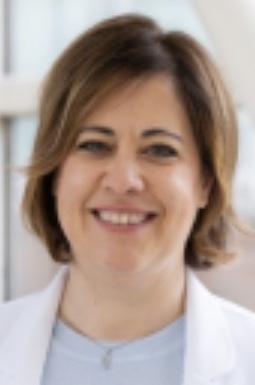
Ohm joined the Roswell Park team in 2016 as an associate professor of oncology, providing expertise in the genetic and environmental determinants of cancer. With over 25 years of experience in cancer research, she has made seminal contributions to science in the areas of tumor associated immune suppression, identification of genetic mutations driving response to therapy, and understanding how cells modify their genome and epigenome to contribute to tumor initiation, progression, and therapeutic escape. She’s led the department in research published in several high-impact journals such as the American Association for Cancer Research’s (AACR) Molecular Cancer Research and Nature’s Scientific Reports.
An internationally known epigenetics researcher, she has made it her life’s goal to find a cure for cancer. Her mission is personal — her mother died from a rare form of the disease she was just 10 years old.
She routinely participates in the Ride for Roswell and Empire State Ride, which help to propel the future of cancer research in her lab and
across the cancer center.
“As we look to position Roswell Park as a global leader in combining epigenetic therapy and immunotherapies, I can think of no better person to help guide our team than Dr. Ohm,” says physician Renier Brentjens, deputy director and chairman of the department of medicine at Roswell Park. “Her rigor and determination are palpable in a field that has tremendous potential and impact for cancer patients and loved ones. We are excited to see where she takes it next.”
Ohm holds her doctorate in cancer biology from Vanderbilt University School of Medicine and completed her fellowship at the John Hopkins School of Medicine.
The Commission on Cancer (CoC), a quality program of the American College of Surgeons (ACS) has granted a three-year accreditation to the cancer program at Erie County Medical Center, a member of the Great Lakes Cancer Care Collaborative.
To earn voluntary CoC accreditation, a cancer program must meet 34 CoC quality care standards, be evaluated every three years through a survey process and maintain levels of excellence in the delivery of com prehensive patient-centered care.
“This outcome is a testament to the high-quality cancer care services at ECMC and the excellent clinical collaboration among our caregivers,” said Thomas J. Quatroche Jr., Ph.D., president and chief executive officer of ECMC. “Special thanks to our multi-disciplinary committee mem bers who came together to oversee ECMC’s CoC accreditation process, which was conducted virtually due to lingering aspects of the pandem ic.”
Quatroche Jr. said the CoC accreditation program provides the framework for ECMC to improve its quality of patient care through various cancer-related programs that focus on the full spectrum of cancer care including prevention, early diagnosis, cancer staging, optimal treatment, rehabilitation, life-long follow-up for recurrent disease, and end-of-life care. “This is yet another significant affirmation of the quality of care at ECMC,” he added.
Physician Victor Filadora, president, Great Lakes Cancer Care Collaborative, said, “Achieving Commission on Cancer designation has been a three-year journey for the ECMC team. It demonstrates ECMC’s commitment to improving the survival and quality of life for cancer patients. The team has made great strides in promoting cancer prevention, enhancing clinical trial offerings, educating the next generation of oncologists and providing comprehensive multidisciplinary care to our cancer patients. ECMC continues to be a leader in quality of care, and the WNY community is healthier and better off because of their leadership.”
Corporations recently
announced the retirement of Anne Constantino who has served as president and CEO since 1994 with a remarkable 37 years of service at the organization. She will step down in June 2023.

Erin DiGirolamo, the organi-
zation’s chief operating officer, has been appointed CEO of the Horizon upon her retirement.
Constantino contributions throughout her career have impacted countless patients and community members locally, statewide, and on a national level. When Horizon’s first addiction clinic opened in 1986, she was hired as a senior counselor. As the years progressed and the company grew, she moved into clinical and operations leadership roles to help meet the increasing community need for behavioral health support.
After being appointed as president and CEO in 1994, Constantino and her team worked tirelessly to sustain a continuum of care in Western New York that included opening additional outpatient facilities for mental health and addiction treatment, as well as the first public residential treatment center, Horizon Village, in Sanborn, according to a news release.
Throughout her leadership, Horizon expanded to serve more counties throughout New York state, created innovative and sustainable support services for patients, families and community members, and became a leader in exceptional person-centered treatment, while also making Horizon a best place to work and receive care. A motto that Constatino has consistently voiced to her team and publicly is, “There will be no waiting,” to ensure that the behavioral health care industry continues to advocate for patients who deserve access to quality care and life changing services no matter where they are living.
“I am honored to have had the opportunity to work with a great team and to build a company that helps people and sets a standard for service excellence,” she Constantino.
In addition to the appointment of DiGirolamo as new CEO, Horizon announced Brandy Vandermark-Murray, who has been at Horizon for 16 years, will serve as president of Horizon Corporations.
The American College of Emergency Physicians (ACEP) has named six UBMD Emergency Medicine physicians as 2022 New York ACEP Unsung Heroes for their dedicated patient care. They were originally nominated by their colleagues.
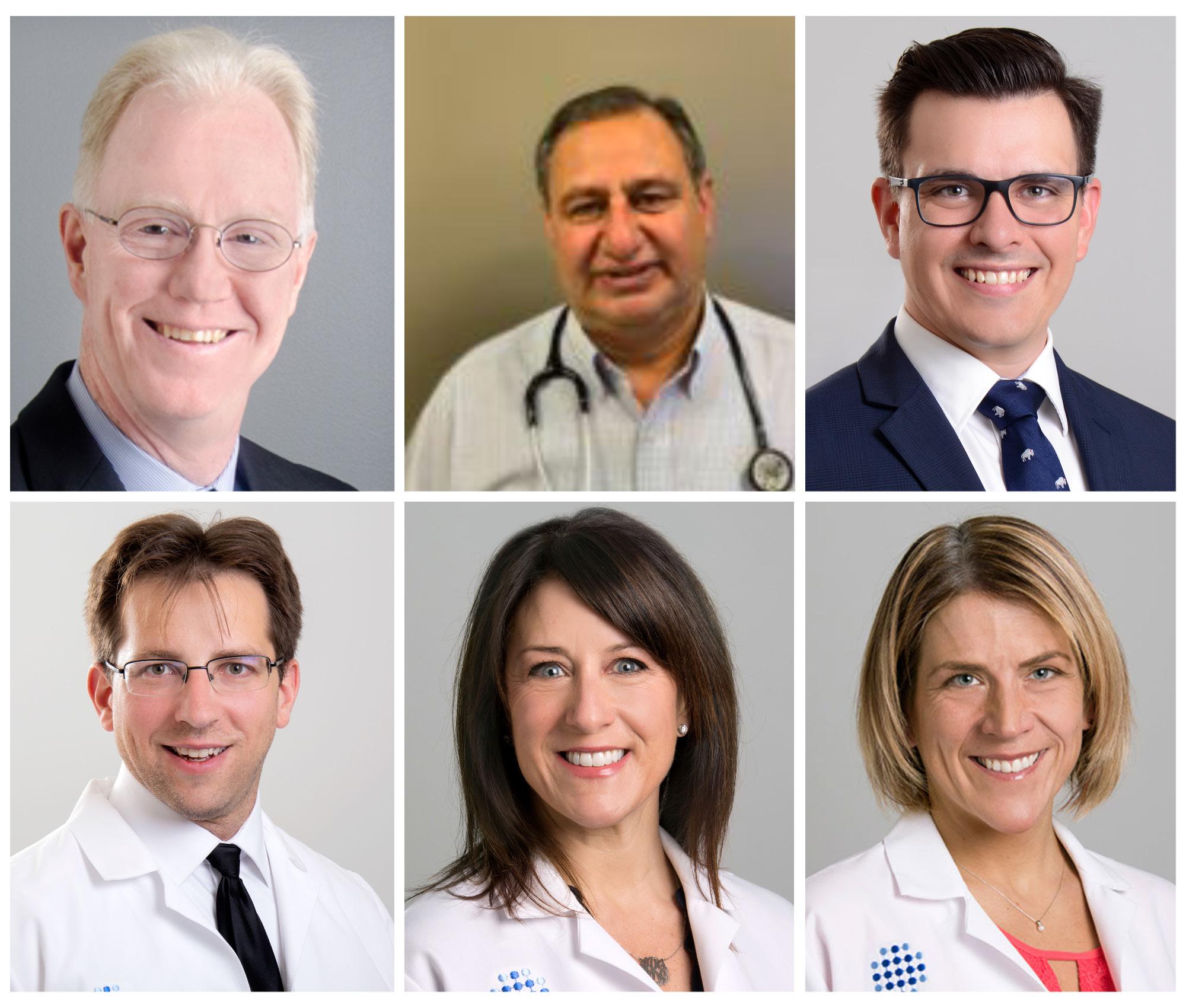
“We’re proud to have so many physicians recognized for what we know and see all year long — their dedication, their compassion and their willingness to give of self to benefit their patients, colleagues and students,” said physician Robert McCormack, president of UBMD Emergency Medicine and professor and chairman of emergency medicine at the Jacobs School.
The following is more information about the individual 2022 Unsung Heroes, including excerpts from their nominations.
• Gerald P. Igoe, assistant professor at Jacobs School. He practice at
Erie County Medical Center.
• Mushtaq H. Khan, Wyoming County Community Hospital.
• Matthew Gondek, assistant professor, Jacobs School. He practices at DeGraff Medical Park.
• Andrew Poreda, assistant professor, Jacobs School. He practices at Buffalo General Medical Center.
• Michelle Rainville, assistant professor, Jacobs School. She practices at Eastern Niagara Hospital.
• Alexis Sciarrino, assistant professor, Jacobs School. She practices at Brooks Memorial Hospital.
The impact of these unsung heroes stretches past the care they provide to patients, according to a statement from NY ACEP. “They train young clinicians, share their skills, knowledge and experience and are always willing to do whatever is needed for their patients and colleagues,” read the stamen.
ident of the Health Foundation for Western & Central New York, has been named by Gov. Kathy Hochul to the stakeholder advisory committee of New York State’s Master Plan for Aging Council.
As one of 28 statewide experts who were named to the committee, OBrien-Suric will help guide the development of the state’s master plan for aging, a comprehensive roadmap for meeting the needs of all New Yorkers as they age.
The advisory committee is made up of leaders from across New York state who represent health care and support service providers; family caregivers and older adults, including those in communities experiencing disparities; labor and community-based organizations; experts on aging; and others. The committee will ensure that leading experts and the public have strong input into the plan and help establish guidelines for age-friendly policies to provide opportunities for New Yorkers of all ages.
The committee will participate in a series of stakeholder engagement sessions to consider input from peer experts and leaders in healthy aging, and will engage in regional listening sessions to help ensure a community-focused approach to the state’s master plan for aging.
OBrien-Suric has served as president of the Health Foundation for Western & Central New York since 2017. She has more than 20 years of experience in philanthropy, with extensive focus on healthy aging issues. In 2021, OBrien-Suric was among the first leaders in New York state to publicly advocate for Gov. Hochul to launch a master plan for aging.

Irene Kotwicki, a resident of Elderwood Assisted Living at Cheektowaga, celebrated 101 years of age in January.
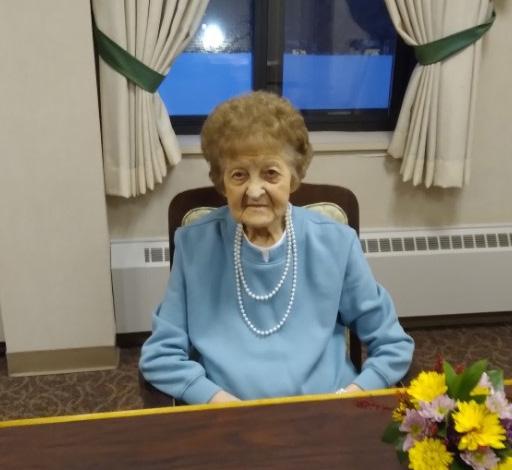
Family members had a get-together and celebrated the date eating pizza, catching up on family issues and watching the Bills’ game.
Kotwicki is currently the only resident at Elderwood Assisted Living at Cheektowaga who has reached 101.
“We’re excited to celebrate this special birthday with Irene and her family,” said Elderwood Assisted Living at Cheektowaga Administrator Danielle Beilman. “Irene credits hard work as the secret ingredient to living a long and happy life.”
Kotwicki grew up on a farm in
The Buffalo Center for Health Equity is celebrating a national honor for its chief executive officer, Rev. George Nicholas, who is also the senior pastor of the Lincoln Memorial United Methodist Church.

Rev. Nicholas is one of two recipients of the 2022 Bernard J. Tyson Health Equity Award from the Alliance of Community Health Plans’ (ACHP).
Rev. Nicholas is known for his work to address health inequities based on race, geography and economics across Buffalo and Western New York.
He is a founding member of the African American Health Equity Task Force which became the catalyst for establishing three entities: Buffalo Center for Health Equity, University at Buffalo Community Health Equity Research Institute, and the Erie County Office for Health Equi-
ty. These groups work together to change the social and economic conditions that cause illness and shorten lives.
“This award shows me that the work we are doing is actually making a difference,” said Rev. Nicholas. “Our goal at the Buffalo Center for Health Equity is to reshape and restructure how we function as a society to eliminate disparities based on race and other factors. It’s important that we work together to make the proper investments in our communities and ensure all people can attain their full health potential.”
Rev. Nicholas’ work with the BCHE is focused primarily on five zip codes in East Buffalo, West Buffalo, and Cheektowaga-Sloan: 14204, 14206, 14211, 14212 and 14215.
In these areas, African Americans are three times as likely to die prematurely as a white person living in a
Boston Hills. She worked on the farm and married at a young age. She had two daughters and was a stay-athome mom until the kids were in high school. Later, she moved to Buffalo where she got a job at a factory.
Kotwicki now has six grandchildren and 10 great grandchildren. She has resided at Elderwood Assisted Living at Cheektowaga since September 2021. She enjoys playing bingo in her free time. The celebration took place Jan. 23. Her birthday was on Jan. 22. Irene Kotwicki, a resident of Elderwood Assisted Living at Cheektowaga, celebrated 101 years of age in January.
Family members had a get-together and celebrated the date eating pizza, catching up on family issues
different zip code in Buffalo, according to the African American Health Disparities Task Force. Black women in these zip codes are also 243% more likely to die from pregnancy or childbirth-related causes than white women.
“This health crisis in Buffalo is not new, and it won’t improve if we don’t have a larger public dialogue on health equity,” Rev. Nicholas said. “Activists work every day to shine a light on the social and economic challenges that lead to shorter lives, but they can’t solve it on their own. We all need to work together.”
Independent Health President and CEO Michael W. Cropp, a physician, nominated Rev. Nicholas for this award, citing his passion for the work and a commitment to collaborative, innovative, community-based solutions in health care.
“No one’s life expectancy should be determined by their zip code,” said Cropp. “Historical practices have put so many people at a disadvantage. Dismantling those practices to create equitable access to health care is a joint effort and sustained passion. Rev. Nicholas has kept the issue in front of policy makers and
and watching the Bills’ game.
Kotwicki is currently the only resident at Elderwood Assisted Living at Cheektowaga who has reached 101.
“We’re excited to celebrate this special birthday with Irene and her family,” said Elderwood Assisted Living at Cheektowaga Administrator Danielle Beilman. “Irene credits hard work as the secret ingredient to living a long and happy life.”
Kotwicki grew up on a farm in Boston Hills. She worked on the farm and married at a young age. She had two daughters and was a stay-athome mom until the kids were in high school. Later, she moved to Buffalo where she got a job at a factory.
Kotwicki now has six grandchildren and 10 great grandchildren. She has resided at Elderwood Assisted Living at Cheektowaga since September 2021. She enjoys playing bingo in her free time. The celebration took place Jan. 23. Her birthday was on Jan. 22. Irene Kotwicki, a resident of Elderwood Assisted Living at Cheektowaga, celebrated 101 years of age in January.
Family members had a get-together and celebrated the date eating pizza, catching up on family issues and watching the Bills’ game.
Kotwicki is currently the only resident at Elderwood Assisted Living at Cheektowaga who has reached 101.
“We’re excited to celebrate this special birthday with Irene and her family,” said Elderwood Assisted Living at Cheektowaga Administrator Danielle Beilman. “Irene credits hard work as the secret ingredient to living a long and happy life.”
Kotwicki grew up on a farm in Boston Hills. She worked on the farm and married at a young age. She had two daughters and was a stay-athome mom until the kids were in high school. Later, she moved to Buffalo where she got a job at a factory.
Kotwicki now has six grandchildren and 10 great grandchildren. She has resided at Elderwood Assisted Living at Cheektowaga since September 2021. She enjoys playing bingo in her free time. The celebration took place Jan. 23. Her birthday was on Jan. 22.
encouraged authentic, collaborative relationships that have led to meaningful change. His vision is making a difference in the lives of so many people in Buffalo and beyond.”
The Bernard J. Tyson Health Equity Award was established in 2021. The annual award honors the late Kaiser Permanente Chairman and CEO Bernard J. Tyson and his commitment to addressing disparities in health coverage and care for all Americans.
“I’m humbled by the award; it made me reflect on the work we’re doing and how it aligns with the great accomplishments of Bernard J. Tyson,” said Rev. Nicholas.
BFLO Hydration Main location 1205 Hertel Avenue Buffalo NY 14216 716-245-1045 Bfloiv.com
Luminescence Aesthetics 2372 Sweet Home Rd. #5 Amherst, NY 14228 716-800-1916
Luminescence-aesthetics.com
OMW Integrative Wellness 235 S. Elmwood Ave Suite 120 Buffalo, NY 14201 716-453-2252
Omwintegrativewellness.com
Essential IV Therapy of Orchard Park 6576 E Quaker St. Suite 3 Orchard Park, NY 14127 716-982-4703
Gotowellnesscenter.com
offers IV cocktails with nutrients tailored for individual needs: athletic performance and recovery, headache and migraine treatment, immunity and stress and anxiety
By Amanda JowseyThe simplicity of my first visit with BFLO Hydration felt a little bit like going in for a haircut, manicure or other routine self-care appointment, but was unlike anything I’ve ever done for myself before.
The only time I’ve had an IV treatment is when I was already so sick that it was the only thing that could get me back on my feet to start healing. Experiencing this while healthy was completely unusual. It felt good to take a proactive approach to my health instead.
The environment at BFLO Hydration calms and reassures the mind, like visiting someone’s house and knowing they will take good care of you. Clients can make a cup of coffee or tea at the coffee station to enjoy while they watch soothing fireside scenes on the ambient TV channel.


The chairs are large and cozy. The space is clean.
Their team is knowledgeable, helpful and friendly. Their smiles and calming presence testaments to their love for helping people stay happy, healthy and hydrated.
Leigh Snodgrass, director of operations and marketing, helped me settle in to my first appointment at their Williamsville office with a sunny vibe and a passion for holistic whole-body wellness.
Darlene Chichester, registered nurse, director of patient care services, first sat down with me and asked what aspects of my health I wanted to focus on to help me determine which IV cocktail would be right for me.
We decided on one of their most popular treatments, the Cheeri-o!
Most of their IV cocktails are aptly named to serve a Buffalo proud population: The Queen City, Chippewa Undone (for hangovers), The Youngman, Sca-Jack-Me-Up, Let it Go, The Myer’s, Cheeri-o, and Thunder of Niagara.
Each cocktail is tailored to treat the body’s specific needs. Some focus on athletic performance and recovery, headache and migraine treatment, immunity and stress and anxiety.
The Myer’s Cocktail is inspired
by Maryland’s John Myers, a physician who started administering IV nutrients to patients to treat a variety of chronic diseases. This signature cocktail can help reduce signs and symptoms of fibromyalgia, asthma, migraines, dehydration and low energy levels.
The Cheeri-o treatment I received, one of their most popular cocktails, is BFLO Hydration’s take on the classic Myer’s Cocktail. It includes a mix of vitamins, minerals and antioxidants.
BFLO Hydration serves almost everyone: those with chronic illnesses or chronic stress, with high demand jobs and lifestyles, athletes, or those interested in health and beauty, to name just a few.
Husband and wife Curt Cabotaje and Amanda Hicks opened in 2018 with the goal of bringing this unique preventative health and self-care experience to the Buffalo area and have since expanded to five locations.
Hicks has been working in the medical administration field since 1999. She currently is the practice administrator for the Venous Institute of Buffalo and a medical practice consultant for doctors and healthcare facilities. She is completing her RN/ BSN and is proud to have assembled a team of nurses who help exemplify her core values: wellness, community, teamwork and fun.
Their team helps clients take back control over their lives and their health without all the unnecessary stress of other approaches to wellness. IV vitamin therapy treatment is a fast, easy and incredibly efficient way of getting your body all the nutrients and hydration it needs.
“IV therapy delivers 100% absorption of vitamins, nutrients, antioxidants and electrolytes into the bloodstream for immediate use throughout your body.” Hicks said.
“Current statistics show that more than 90% of Americans suffer from some type of vitamin deficiency and 75% of Americans are dehydrated. As we age, our bodies inevitably undergo wear and tear. These changes include the buildup of toxins and free radicals within our cells and can directly impact our ability to fight
chronic disease and autoimmune disorders,” Hicks said. “Our digestive health may also suffer and our energy levels can sink. By bypassing the GI system, our vitamins and supplements are introduced into the bloodstream for immediate use and 100% absorption. What this means, is that the body doesn’t have to do any work to be able to utilize them. We see dramatic results with even fluids alone.”
BFLO Hydration also does intramuscular injections with a variety of choices to meet different needs, like antioxidants with anti-aging properties, or immunity boost. These injections “provide a week’s worth of vitamins with only one injection,” she said.
I tried a B12 injection after my IV therapy. The shot was painless and had no side effects. B12 injections have been shown to have immediate health benefits including increased energy and concentration, improved metabolism, stronger immunity, improved sleep and can also help with hair loss.
BFLO Hydration also offers an infrared sauna, Hydrafacial and “Q-Boost Sprays,” vitamin sprays that can increase antioxidants and boost vitamin intake.
IV therapy is a helpful and motivational option to people that sometimes, for whatever reason, can’t get on top of their health. It can help give individuals the little boost they needed to get started on their wellness journeys, to just get back to daily life and to prime the body for optimal health.
After my treatment, the sluggish and cloudy feelings I carried walking in the morning of my appointment did progressively improve throughout the day. I could feel the effects right away and they carried into the following days. My mind feels sharper and more motivated to do the things we sometimes tire of doing on a day-to-day basis, especially with a lack of sunlight in winter. My body feels more energized and notably stronger.
Golden Halo Concierge 4655 N. Bailey Ave Suite 202 Buffalo, NY 14226 716-341-6191
Goldenhalonurse.com
IL Mulino- Aesthetics 8207 Main St. Suite 14 Buffalo, NY 14221 716-954-3122 Weareilmulino.com
Their nurse practitioners and registered nurses are trained in creating cocktails for hydration, wellness and vitamin supplementation. They can help clients decide when and how often to schedule an appointment. The benefits of an IV treatment typically last three to four weeks.
Their cocktails are made of four main building blocks: amino acids, antioxidants, minerals and vitamins. They are all sourced from FDA-approved pharmacies and mixed using sterile, aseptic techniques in compliance with medical guidelines. Their staff is trained in sterile precautions and is supervised by their medical director, Roseann Boswell.
The treatment is safe for everyone except minors and people with specific chronic diseases. Those pregnant or breastfeeding may still have treatment, but may not be able to include certain ingredients in their treatments. Their NP and RN work closely together to review medical history so that each client can get the IV Therapy that’s right for them.
Hicks, always reminds her clients that IV Vitamin therapy is not a replacement for healthy lifestyle choices and regular medical visits, but a supplement to these regular practices.
“I would tell anyone who is considering having an IV cocktail to be very transparent with your health history. Understanding that each individual is unique is a very important step for our registered nurses and medical director when considering your candidacy for each of our ingredients. We never diagnose or treat any medical disease. What we offer can be used as an additional supplement to traditional medicine. It can be a really great benefit when you’re looking for a way to replenish your system,” she explained.
BFLO Hydration does not accept insurance, but “our services are still less expensive than a lot of copays or a trip to the spa,” she said.
BFLO Hydration also provides concierge service to homes, offices and hotels.
Prices starting at $175